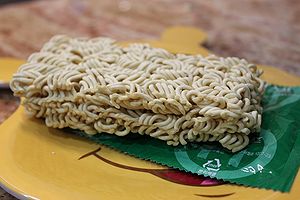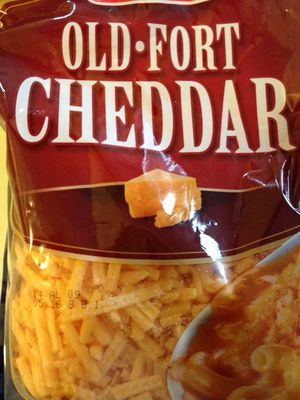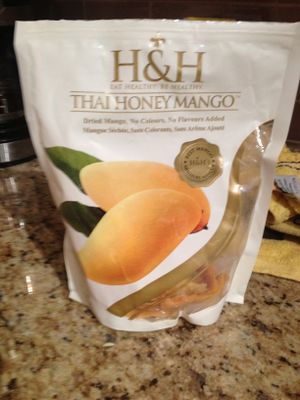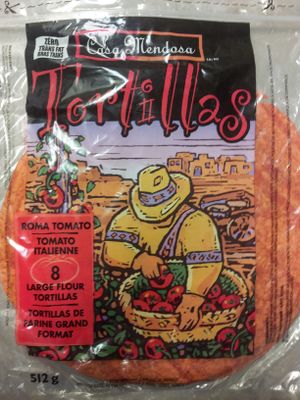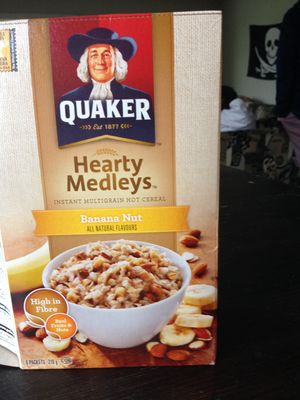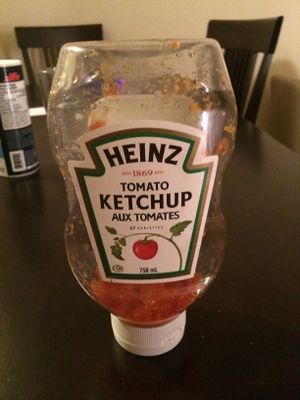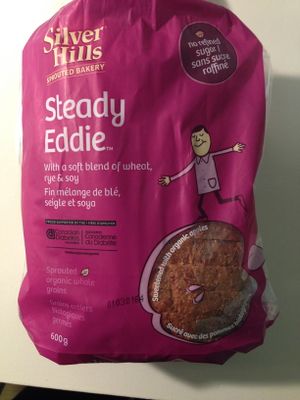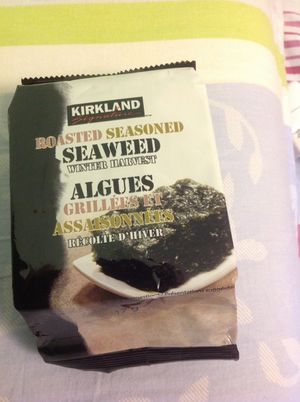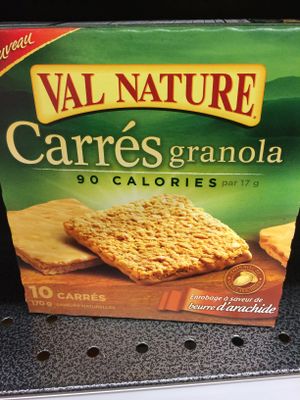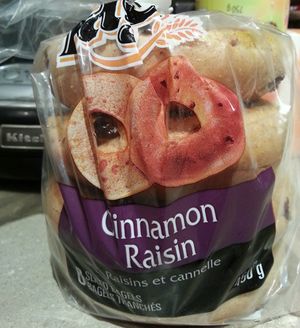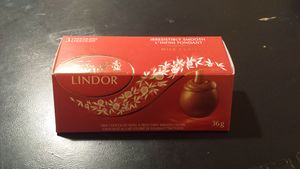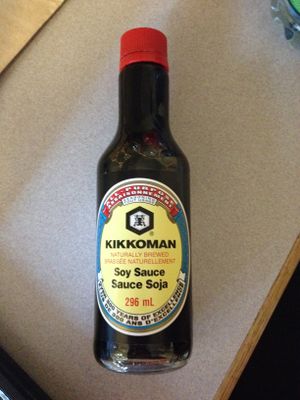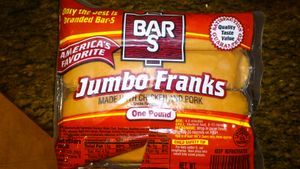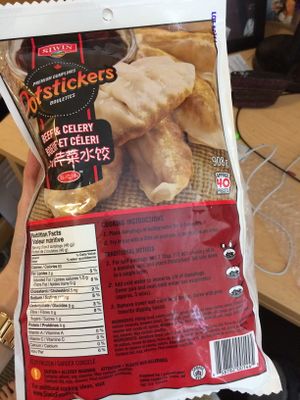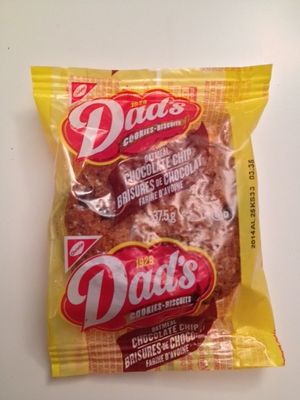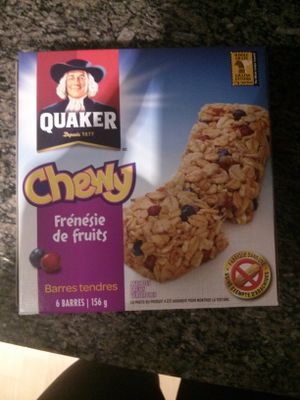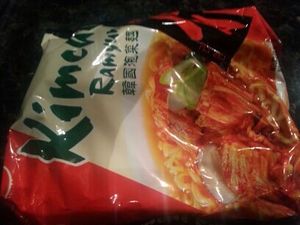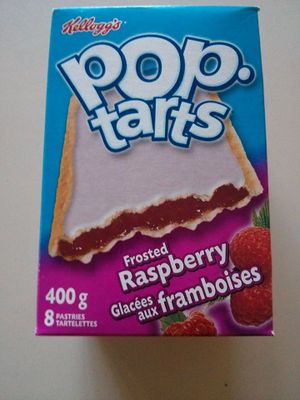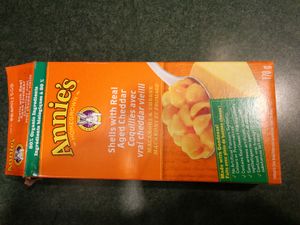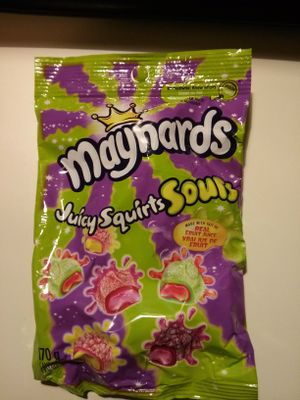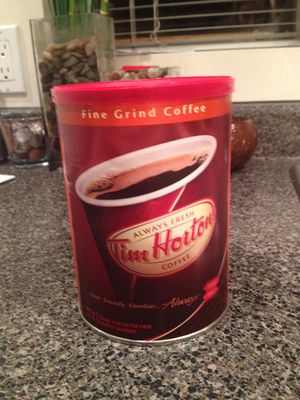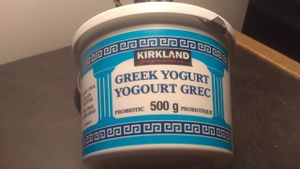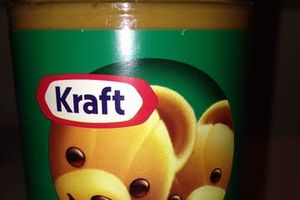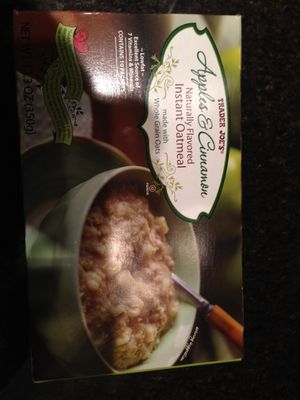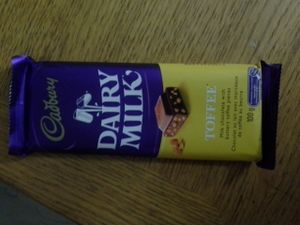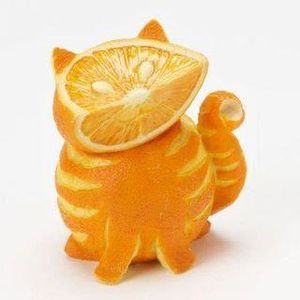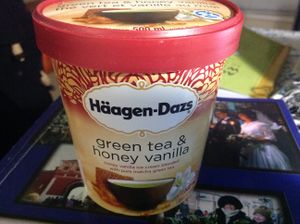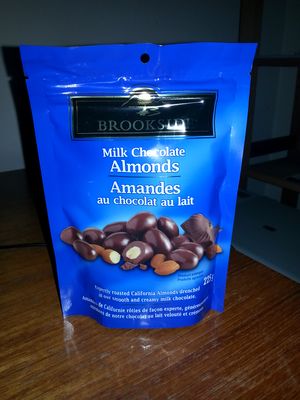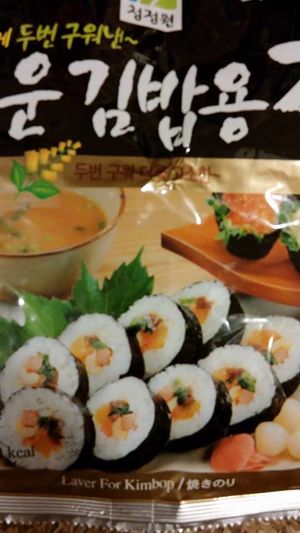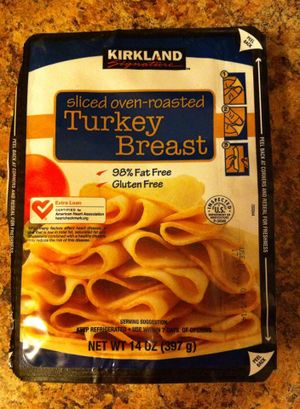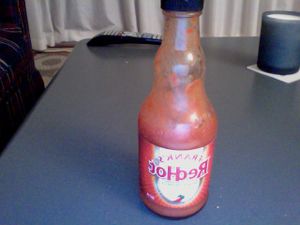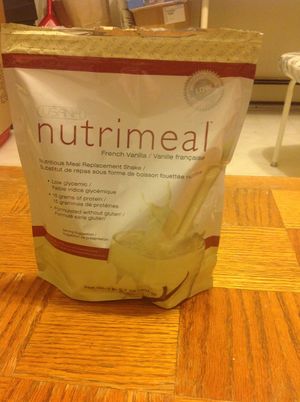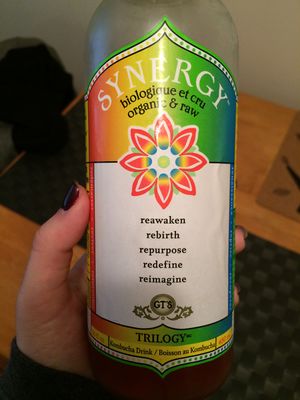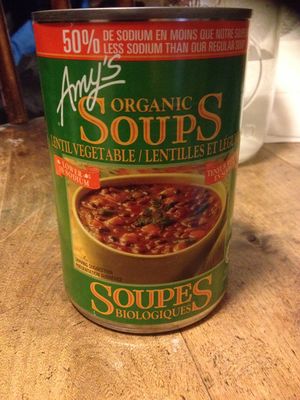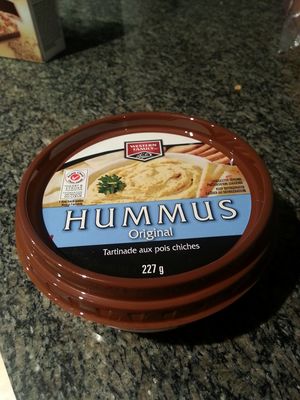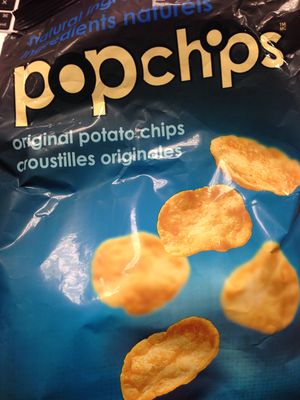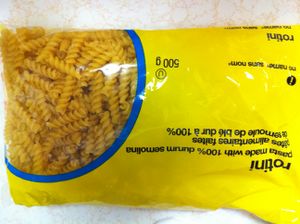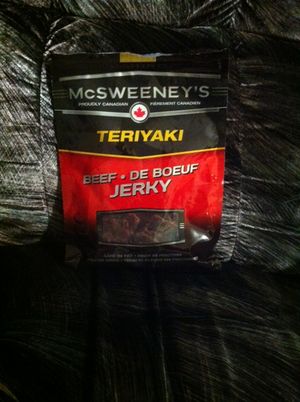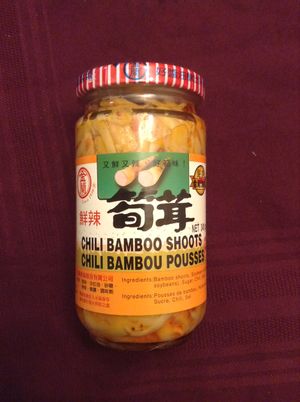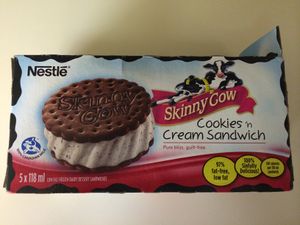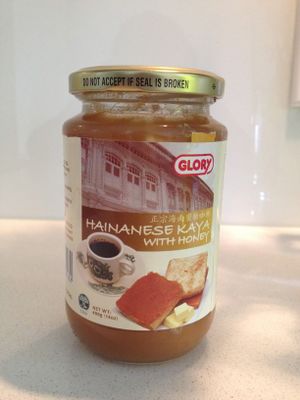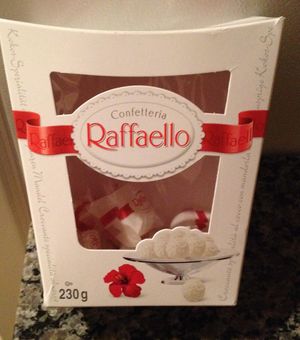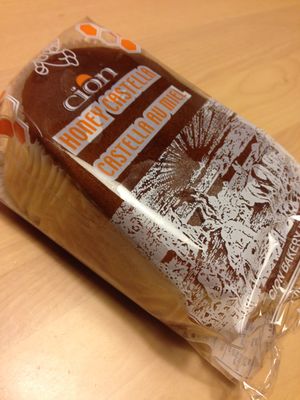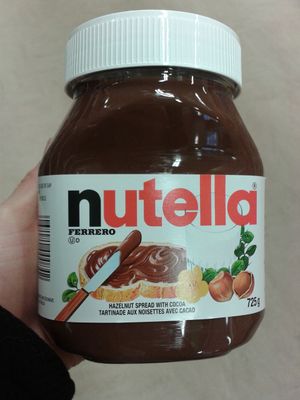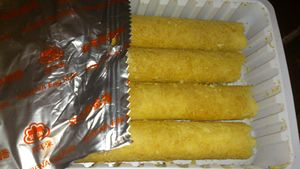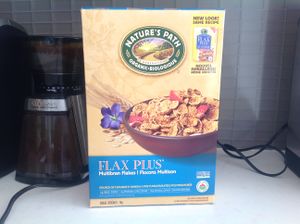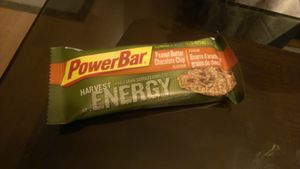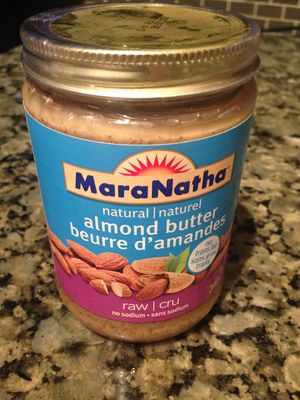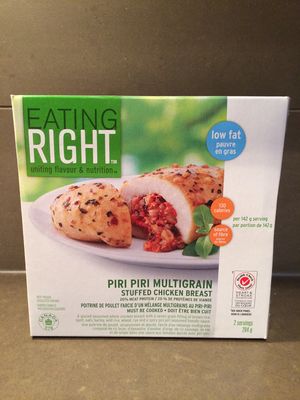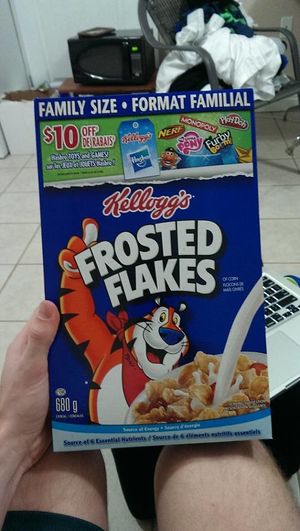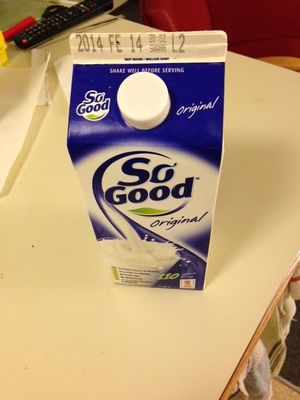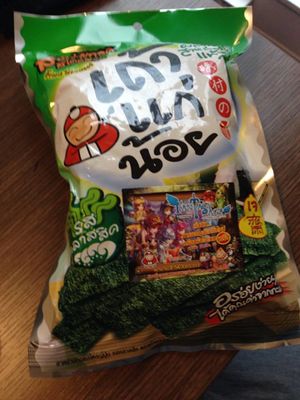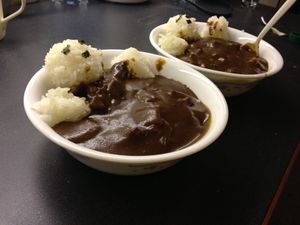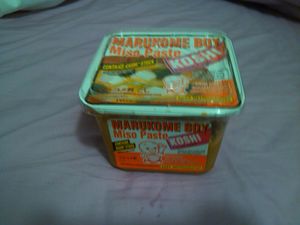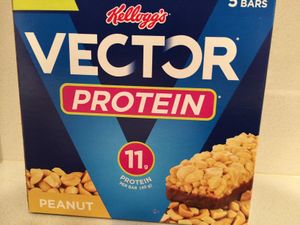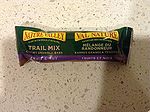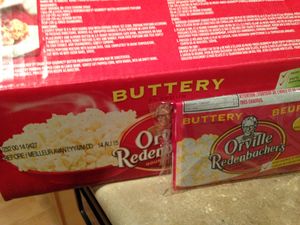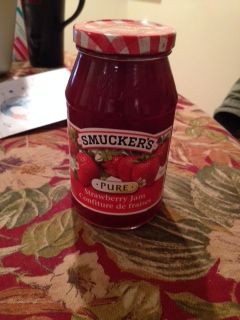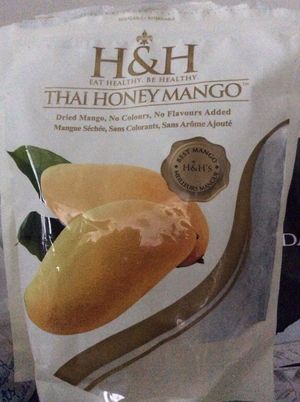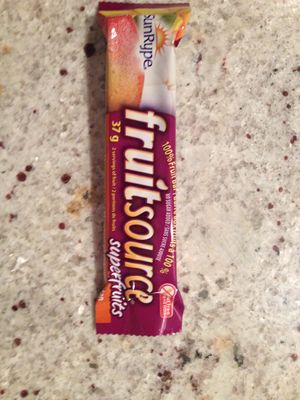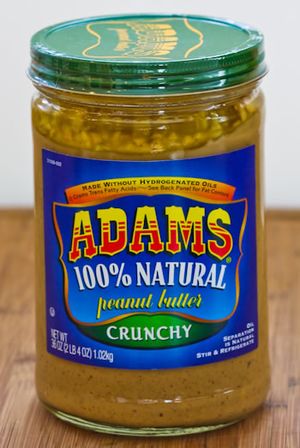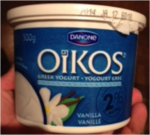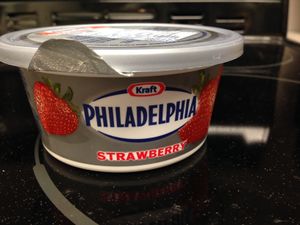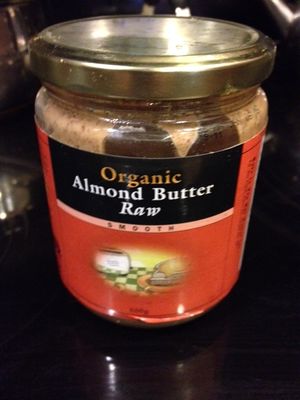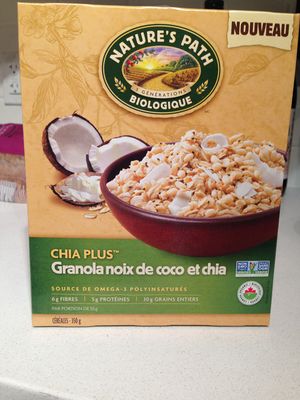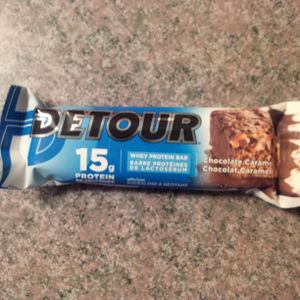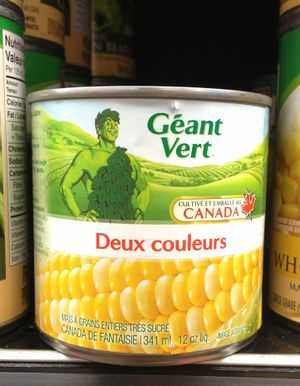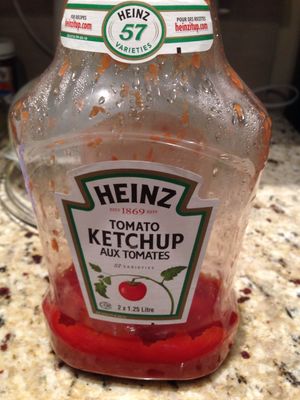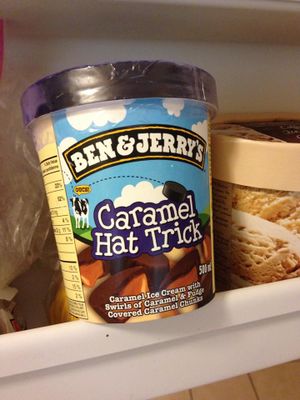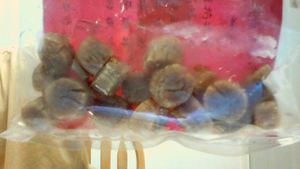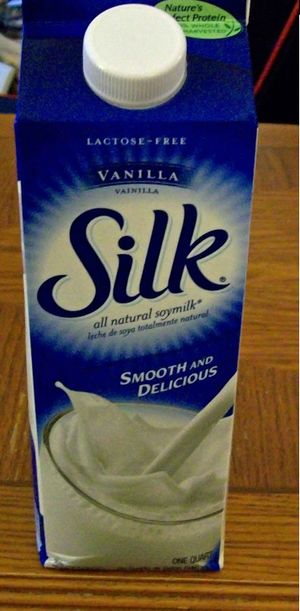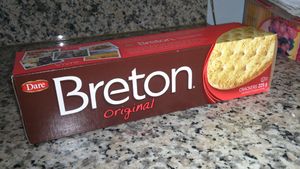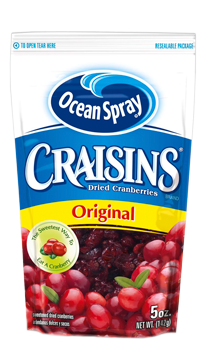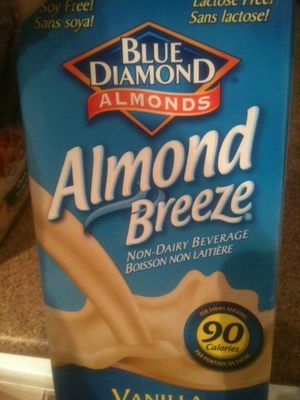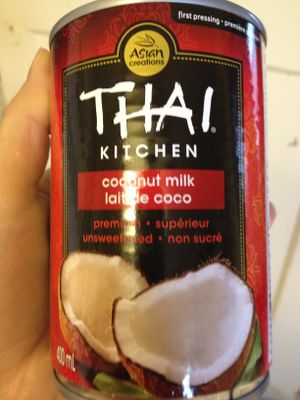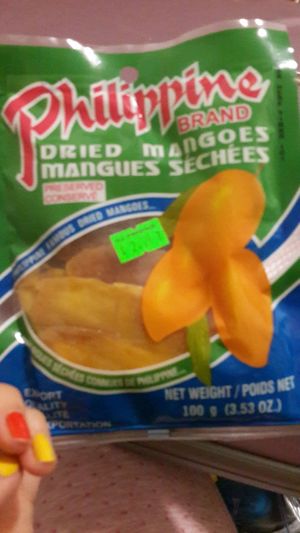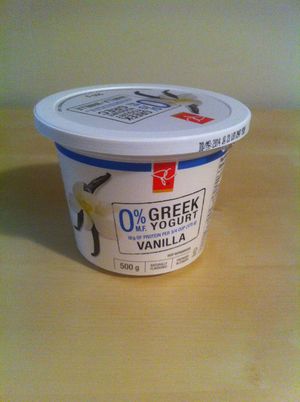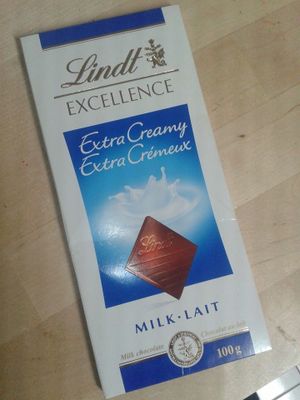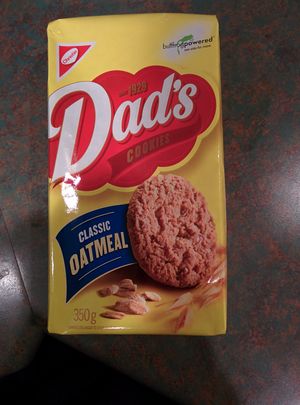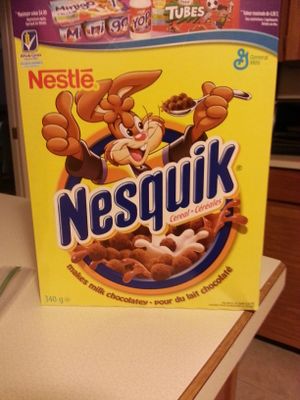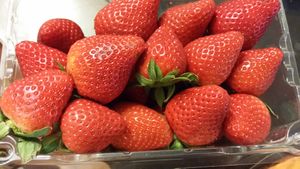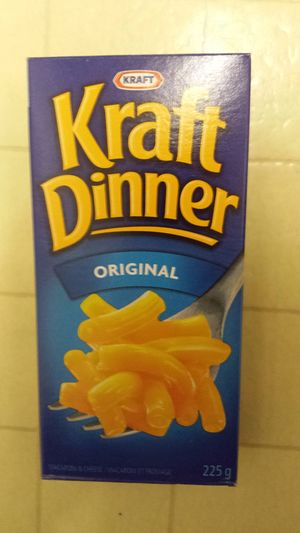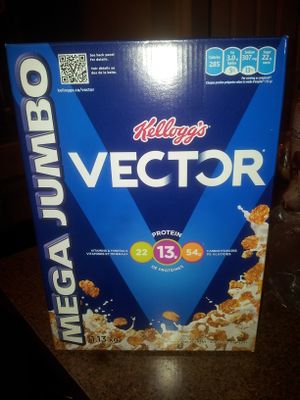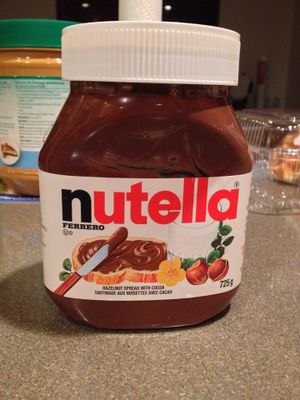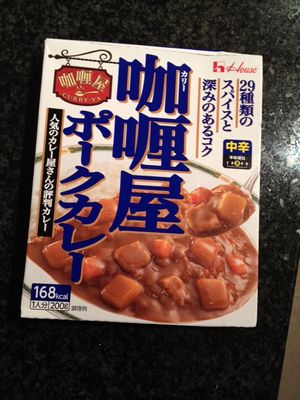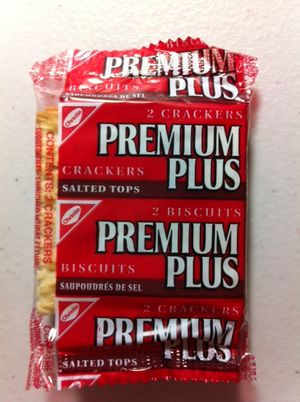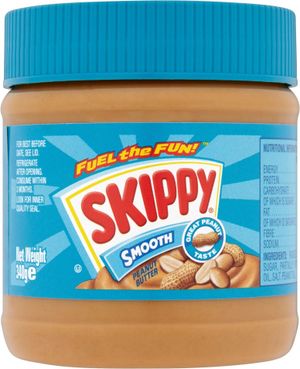Course:FNH200/2013w2/Assignment01
Assignment #1 and Assignment #3
Assignment 1
The learning goals of Assignment #1 are to help you:
- familiarize yourself with UBC Wiki by
- creating a UBC wiki ID
- uploading a photo of a food you like or are curious about
- posting it on a pre-set UBC wiki table
- identify what exactly you like to explore about a food you like
Assignment #1 Activities
- Take a look at your pantry, drawer, and/or refrigerator, or browse around at your favourite grocery store
- Identify a processed food that you like to explore more
- Snap a close-up photo of the food or its packaging
- Login to UBC Wiki with your CWL (Reminder: The UBC Wiki is an open site. Your activities on UBC Wiki can be accessed, viewed and evaluated by everyone. Please be mindful when you create your ID.)
- Upload the picture on UBC wiki (follow the Upload File link on the left panel)
- Post your picture in an appropriate space below (check this for how to add an image)
- Describe briefly (in less than 50 words) why you selected this particular food
- List 5 scientific questions you have about this food
Please submit your assignment #1 by your last name (surname or family name):
Assignment #3 - A Reflection on Learning Due Date: Tuesday, April 22, 12:00 noon
This is a time to revisit what you wanted to learn and some questions you had about foods at the beginning of the course. Here is what I expect you to do as your last assignment for FNH 200.
- Revisit the questions you asked at the beginning of the course (in alphabetical order of your last name below)
- Are you able to answer them?
- If yes, please answer your own questions to your best ability. Please also provide the Lesson # that associates with your answer.
- If not, try to make connections with concepts you've learned. Educated guesses are welcome, but no wild guess please. You may want to speculate where you may be able to find the answer to your questions, such as academic/research literature, government websites, food associations sites, health organizations, etc. Answers such as 'I will google it later' is definitely not enough :) .
An example on instant noodle is provided below. I've tried to answer the questions as a 2nd year FNH 200 student :)
For Example, Under family name C
| Your Wiki ID | Photo of a Food You Like to Explore | Why Did You Select This Food? | Questions You Have about This Food |
|---|---|---|---|
| YoungJudy | My family loves instant noodles. There are at least 10 different varieties (brands and favours) of instant noodles in our pantry. |
For question #1, I am guessing that it is because the noodle was deep fried and deep fat frying is a way to remove water from the original noodle (Lesson 06). I'm not sure how it makes it instant, but think it must have been to do with the rehydration rate of the noddle (Lesson 06). 2. We never talked about wavy noodle in FNH 200. Perhaps it helps with the rehydration? The wavy structure may help water re-absorption. When I have time, I may read more about this in the book "Asian Noodles: Science, Technology, and Processing" edited by Gary G. Hou. Wiley. 2010. p. 128. 3. According to Lesson 08, the seasoning can be dried in two ways. The powdery seasoning may have been dried with spray drying as it is a common method to dry liquid (soup) and the dried onion may have been dried with tray drying. 4. No expiry date means the noodle has a shelf life more than 90 days (Lesson 04). I think it will eventually expire as I've had rancid noddle in the past. I think keeping it in cool temperature in the dark may prevent oxidation (Storage session in Lesson 06). 5. We never talked about this in class. But I remember that gluten is responsible for the elastic and springy structure in bread (Lesson 02). These structures are not that important in noddle. I hope that eventually, gluten free noodle could be developed since my close friend is sensitive to gluten and she also loves instant noodle. |
Your Real Family Name that Starts with A
| Your Wiki ID | Photo of a Food You Like to Explore | Why Did You Select This Food? | Questions You Have about This Food |
|---|---|---|---|
| aarbuah | I selected cheddar cheese because it is my favorite processed food and I eat it with many meals. |
Answers:
|
Your Real Family Name that Starts with B
| Your Wiki ID | Photo of a Food You Like to Explore | Why Did You Select This Food? | Questions You Have about This Food |
|---|---|---|---|
| Banki , Paniz | [[1]] | ketchup is my favorite sauce and I use it with lots of different foods | 1-Do I need to refrigerate ketchup? Does it make its shelf life increase?
2-what makes the ketchup a processed food? 3-are there real tomatoes inside the ketchup? 4-what makes it unhealthy? 5-what are better substitute for it? 1-because ketchup is naturally acidic it is shelf stable. But the stability can be affected by storage conditions after opening. So it is recommended that this product like other processed food be refrigerated after opening. Refrigeration does maintain the best quality after opening. Also it is also good to look for the ‘’best by’’ date on the cap or back of bottle. 2-Long shelf life, ingredients and the process of making the food, and the need to refrigerate after are all the sings of the processed food.3-Yes. Real tomatoes are used in ketchup. The tomatoes must also be good quality tomatoes for their product. Best tomatoes are superior in color, flavor, texture, and yield. Consistency is an important factor, as slight variations in tomato characteristics could alter the flavor and color of the finished product.4-you can also make ketchup in your kitchen which gives you the advantage of controlling the amount and type of sweetener, as well as all other ingredients. Two tablespoons of this ketchup has approximately the same amount of sodium as 2 ounces of salted peanuts or potato chips—roughly 16% of your sodium daily intake.5- try fresh salsa instead of ketchup. Remember, you can cut down drastically on the amount of sugar a recipe calls for, as well as substituting more healthful natural sweeteners. |
| borlandh | I love dried mangoes - there are sweet but also a healthy snack. I eat them almost every day. I try to get dried mangoes that don't have any added sugar and are natural. | 1. How do the mangoes stay fresh? From Lesson 8, the mangoes stay fresh because of case hardening that occurs during the drying process due to the high content of natural sugars in the fruit, as well as proper packaging of dehydrated foods to ensure no moisture gets inside the sealed package.
2. How do they get dried? From Lesson 8, mangoes are dehydrated by tray drying in a oven designed for commercial dried mango production which removes a large portion of the fruit's water content. 3. How do they keep their colour? From Lesson 8, dried mangoes are able to stay fresh because dehydrating them is a means of preservation, the case hardening also helps protect the product from an oxidation or chemical reactions that would brown the fruit. 4. Are certain mangoes better to use/ do they last longer than others? I didn't find any information that one type of mango was better than another for drying, but noted that it was important to dry the mangoes when they are at their peak ripeness for maximum sweetness. 5. How many dried mango pieces should you eat in day before it is unhealthy? Most brands of dried mangoes, like the brand i use, has about 160 calories for 6-8 pieces. I think this is a good serving size for a snack, but that we shouldn't consume more than that on a daily basis because of the high sugar content. However, it is a much healthier alternative to snacking on potato chips or a candy bar. | |
| jsbe | You can put anything in a tomato tortillas and it always ends up to be a tasty snack. It is also very easy to prepare. I love tortillas! |
1. Are there real tomatoes in the tomato tortillas? If so, how are the tomatoes processed in tortillas? They are picked, dried, and powdered before mixing in with flour and other ingredients before made into a tortillas. 2. Does the shelf life increase if the tortillas are put in a fridge/ freezer? From lesson 7. Yes, shelf life increases if the tortillas are put in a fridge/ freezer. Refrigeration temperatures inhibit the growth of most disease-causing microorganisms but favour the psychrotrophic spoilage-causing microorganisms. Some spoilage-causing microorganisms, particularly moulds, can grow at temperatures as low as -8°C. Lesson 8, Also when food is frozen, there is less free water which prevents growth of moulds etc. 3. Are tortillas generally healthier than bread? Depends on what the tortillas are made from. However, whole-grains are more healthier than white grains because whole grains contain greater proportions of finer and nutrients. Since white flour is more processed, it loses more nutrients during the processing compared to whole-wheat which is less processed. 4. Is the red colour of the tortillas artificial? In the specific tortillas displayed in the image, Tartrazine is added to give a red colour to make it more appealing for the consumers. However, some tomato tortillas do have a red colour depending on the processes of making the tortillas. 5. Why do tortillas get hard when left out in the open? From Lesson 8. The tortillas become hard when left out in the open because of the process of dehydration. The water content in the tortillas leave making the tortillas hard. In order to prevent this is to have a seal to prevent loss of water. | |
| ebenedon | I eat instant oatmeal nearly every morning. I've been told that oatmeal is healthy, and it is easy to change the flavor by adding different things to it. | 1. How do the oats absorb the water? 2.Is oatmeal god for building muscle? 3.How do the manufacturers give the oatmeal different flavors? 4. Is oatmeal in packets worse for you than the oatmeal that you have to prepare yourself? 5. Is it better to cook it with milk or water? | |
| MeganBarnett | http://wiki.ubc.ca/File:Mayo_001.jpg | I've been putting mayonnaise on my food for as along as I can remember. Hot dogs, hamburgers, french fries; all the good stuff, right?. Now that I've taken classes on nutrition I'm wondering if I should still be eating it. I'm also wondering how exactly it's made and what processes are used. | 1. How can you make a "light" version with half the fat? 2. How can you reduce the saturated and trans fats? 3. Is it relatively healthy to eat? 4. What gives it the white colour? 5. What processes are used to create this product?
Answers to these questions: 1. From lesson 4, we know that in order for a product to be labeled "light" it needs to have a reduced fat and Calorie content expressed in grams per serving size compared to that of the original product. 2. Fat is an important ingredient in mayonnaise since it is a emulsifying agent (lesson 2). To reduce the amount of saturated or trans fats in a product one could use a fat substitute (lesson 3) in order to keep the taste consistent but reduce the Calories or fat content. 3. Since this course is not about the nutritional side of food, this question can't be answered from the lessons. Although, based on my knowledge from this course and others, I would say that the light version of mayonnaise could be healthier since there is less fat and Calories. This would depend, however, on if they had to add anything else to the product in order to give it the same taste. These things being added may not be good for you, though, so it could make the light version worse for you. It truly depends on the person. 4. As we learned in lesson 2, colour pigments are naturally present in a lot of food. They can change when exposed to different factors such as pH, temperature and storage time. I do not know exactly what gives mayonnaise its white colour, but I can speculate it's white because of the ingredients which do not have any significant colour pigments in them. 5. There are most likely many processes involved in the making of mayonnaise which include the use of many preservation methods. For example, low temperature storage (lesson 7) to keep the mayonnaise good for a longer period of time is definitely important. Certain ingredients of the food itself also contribute to the longer storage life of the product. This would be the acid (lesson 9), sorbic acid or the acid in lemon juice, and possibly salt as well. Dehydration (lesson 8) is most likely involved in the processing too since egg and modified starch (corn, potato) are on the ingredient list for this product. |
| Angela Brand | I have loved ketchup since I was very young and still use way too much of it! |
1. Why is Heinz better than any other kindzs? It probably has more sugar than other varieties and also has years of product development to perfect the recipe. Or it could just be the marketing! 2. Is there more sugar in ketchup than in pop? No. One can of pop has 41g of sugar and 1tbs of ketchup has 4g of sugar so you would have to eat 10 tablespoons of ketchup to equal a pop. 3. What is the purpose of sugar in ketchup? The sugar in ketchup is good for flavor, as sugar generally can be used to cut the acidity in a tomato dish without inhibiting the taste or outshining the tomato. Also, the sugar is used as a preservative. 4. Does the red colour only come from the tomatoes or is there food colouring? The colour of ketchup is due to the primary ingredients, tomatoes. 5. How do they make other coloured ketchup? "Making ketchup in outrageous colors required some re-engineering of the actual ketchup product. The vibrant color hues of EZ Squirt's Blastin' Green, Funky Purple, Stellar Blue, Passion Pink, Awesome Orange, and Totally Teal were achieved by stripping the red color from traditional Heinz ketchup and adding food coloring. And because the flavor had to be tweaked to taste just like traditional ketchup, it could no longer be called 'tomato ketchup' like the original red." http://www.fastcompany.com/1779591/what-were-they-thinking-day-ketchup-crossed-line-perfect-purple | |
| dbond | I love bread and couldn't imagine not being able to eat it everyday! I personally really enjoy the sprouted breads by Silver Hills as I find them much more filling than regular whole wheat brands. |
1. Why does it appear that more and more people are developing gluten intolerances? This was not covered in class, but I do know that traditional wheat used in bread is now commonly being replaced with genetically modified (GMO) wheat (Lesson 09). GMO have a foreign piece of DNA inserted into their DNA, which possibly when consumed could be detected as a foreign substance that the body does not recognize and as a result reacts to in a negative way. More information about this topic could be possibly be found in the article “Celiac Disease: On the Rise” published in the Mayo Clinic’s Online Research Magazine (http://www.mayo.edu/research/discoverys-edge/celiac-disease-rise). 2. Are the common health concerns about soy (one of the ingredients used in this brand of bread) justified? This was not covered in class either, but soy was mentioned in FNH 200 that it is a common allergen. I do know that soybeans contain phytoestrogens, which are similar to the naturally occurring hormone estrogen. Phytoestrogens are supposed to offer many health benefits. I could find out more about this topic under the Better Health Channel produced by the State Government of Victoria at: http://www.betterhealth.vic.gov.au/bhcv2/bhcarticles.nsf/pages/Soybeans 3. How is this particular brand of bread made using sprouted grains? This was not exactly covered in FNH 200, but sprouted grains are used in the same way that regular flour would be used with the exception that the grain has been sprouted. With regards to nutritive value, Lesson 11 does review the effects of processing on the nutritional value of food, which I believe sprouted grains would have a different effect on the nutritive properties of bread compared to the more standard milled grain. As stated in Lesson 11, processing method is one factor that does directly impact the degree of nutrient loss. I expect that using sprouted grains as opposed to milled flour would increase the nutritive value of bread, as a sprouted grain tends to have a higher nutrient composition than ground flour. More information on this question could possibly be found under the article “Sprouted grains for a healthier breakfast?” published by the University of Victoria (http://www.vu.edu.au/news-events/news/sprouted-grains-for-a-healthier-breakfast). 4. What type of grains make the healthiest bread? Again, this was not covered in FNH 200. From prior knowledge though, whole-grains as compared to refined wheat flour make for healthier bread, as they contain more fiber and higher amounts of nutrients. However, I am still unsure which grains are healthier than others, i.e. wheat versus rye, etc. Perhaps, I could find more information on this topic under the Whole Grains Council website at: http://wholegrainscouncil.org/whole-grains-101/health-studies-on-whole-grains. 5. What factors make whole-grain bread healthier than white bread? Again, this was not exactly covered in FNH 200. From prior knowledge though, whole-grains as compared to white flour is healthier, as whole-grains contain more fiber and higher amounts of nutrients. With regards to processing and nutritive loss as covered in Lesson 11, whole-grain bread is processed to a lesser degree than white bread, as both the bran and germ are left in the bread compared to being milled and removed to produce white flour. Both the bran and germ contain plenty of fiber, vitamins and minerals, which should result in a higher nutrient composition and better nutrient retention for whole-grain bread. Perhaps, I could find more information on this topic under the article “Whole grains: Hearty options for a healthy diet” published by the Mayo Clinic at: http://www.mayoclinic.org/healthy-living/nutrition-and-healthy-eating/in-depth/whole-grains/art-20047826. |
Your Real Family Name that Starts with C
| Your Wiki ID | Photo of a Food You Like to Explore | Why Did You Select This Food? | Questions You Have about This Food |
|---|---|---|---|
| LiangyuChen | Whenever I'm studying or doing anything else it is the perfect snack because it is very munchable and cripsy and very fun to eat. My friends, family, and I all enjoy eating this snack, |
Answers:
| |
| AigelChan | Granola Thins is one of my favorite snack, it's peanut butter flavored! I used to have them all the time and sometimes even have them as substitutes for real meals. Therefore I am really interested in learning about how it is processed and made! |
| |
| yunsun94 | Bagels are perfect when you are looking for a quick bite before going to class or for a simple snack. Cinnamon raisins in the bagel give extra flavour and is just as good alone without cream cheese. |
| |
| KarenCheung | Chocolate is one of my favourite snack to have. I need to have chocolates when I study for my exams. I especially like Lindor chocolate because of the smooth texture it has when the chocolate melts in the mouth. My family enjoys this chocolate as much as I do |
Answers:
| |
| IsabelaCravo | I chose soy sauce because I really like it and I tend to put soy sauce in almost every dish that I cook… |
1. The content of salt can range between 14–18%. It is difficult to make soy sauce without using some quantity of salt as an antimicrobial agent, as seen on lecture 5. Another motive to add salt is for the taste, soy sauce is a great source for salt in all kinds of sauces and marinades. 2. Basically soy sauce is a by-product of fermented soybeans and wheat that have been mixed with brine, unless they are Chemical soy sauces, that are made by hydrolyzing soy protein and combining it with other flavorings. 3. "Less Sodium" soy sauce is made the same way as regular soy sauce, but about 40 percent of the salt is taken out post-brewing. A light Chinese soy sauce can be described as made from the first pressing of fermented soy beans, they are meant to enhance flavors when cooking. 4. Soy sauce usually isn't gluten-free, most brands contain wheat as their first ingredient, but you can find some types of soy sauce that are gluten free. 5. Once opened, the soy sauce will start to lose its freshness and the flavor will begin to change. By refrigerating the sauce, the flavor and quality will remain at their peak for a longer period. As long as no water or other ingredients have been added to the soy sauce, it would not spoil if it had not been refrigerated. | |
| tarnc | Placing one of these in a hot dog bun and you have heaven on earth. Easy to make and easier to eat, I don't usually go 3 weeks without having a hot dog. |
| |
| Ting | I chose dumplings because I am a fan of them and I've enjoyed them ever since I was young. |
1. According to lesson 07, for food to last longer, it has to be preserved. Therefore for dumplings to last a longer period of time compared to a freshly made dumpling, there has to be preservatives and preservatives methods such as indirect contact freezing and air freezing. 2. Compared to eating a regular freshly made dumpling, it would be more unhealthy to eat a frozen dumpling. There is relatively more sodium in frozen foods compared to freshly made food, and our daily intake of sodium per day is around 2300mg, where as frozen foods may contain half that amount. 3. My guess would be that there are several preservatives that keep the dumpling gravy frozen within the food component. Also when it is frozen, liquid particles are also frozen and may not be visible in the frozen food until cooked. 4. Eating frozen food does not mean it would be unhealthy. However, saturated fats are common in frozen meals and therefore would more likely be an unhealthy choice compared to a freshly made dumpling. There could also be more additives added to frozen dumplings, therefore checking the nutritional label would be a good idea if you were watching your weight. Since in the previous question I mentioned sodium content, it should also be something to look out for when purchasing frozen dumplings, it could and most likely contains more sodium than freshly made dumplings. 5. One cannot be sure if there is MSG inside the dumpling or not unless it states on the package itself that it is "MSG free" or otherwise. |
Your Real Family Name that Starts with D
Your Real Family Name that Starts with E
| Your Wiki ID | Photo of a Food You Like to Explore | Why Did You Select This Food? | Questions You Have about This Food |
|---|---|---|---|
| GDhaliwal | Cookies are one of my favorite foods to snack on, especially alongside a tall glass of milk. I am interested in learning about how processed cookies stay good for a number of months post manufacturing. |
Answers:
References: Health Canada. 2013. Food Additive Dictionary. Publication H49-10/1996E. Ottawa: Health Canada. http://www.hc-sc.gc.ca/fn-an/pubs/securit/2012-allergen_sulphites-sulfites/index-eng.php | |
| Nicole del Aguila | Granola Bars are quick and easy to eat in the mornings when I am in a rush to get to class. |
| |
| Jia Hui Deng | I love Korean food,for example kimichi tofu soup and kimichi pork, so I enjoy this kimichi flavor of instant noodle a lot. |
Answer: 1. When I read its ingredient list, I found tocopherols and citric acid, which are under list of permitted preservatives by Health Canada. In the ingredient list, it states " tocopherols as antioxidants." From lesson 5, we learnt that antioxidants added to the food could delay or prevent oxidative rancidity. Also, we learnt that we could prevent or delay enzymatic activity by controlling the acid condition in the food. The example we learnt from class was that citric acid was added to apple slices in order to create an acidic condition in the food. 2. We do not talk about what chemicals contribute to the kimchi flavor in class. But we learnt how to dehydrate the vegetables flakes and flavor powders for instant noodles. (Lesson 8) I guess that vegetables flakes and flavor powers are dehydrated by spray drying process, that evaporates from these ingredients without losing their flavors. I guess that we do not put chemicals that is specific for kimchi flavor to the food. 3. Sodium is mainly from salt in the instant noodle. I guess that sodium in this noodle plays a major role of contributing to the flavor. I guess that it may contribute to the dehydration effect for this dry noodle. From lesson 5, we learnt that a large quantity of salt was added to fish or meat for preservation. From lesson 2, we learnt that salt is a water binding agent, which lowers the rate of free water activity in food and inhibits microbial growth. 4. From lesson 8, we learnt a couple of factors that affects dehydration rate. These factors also affect to the rehydration rate. For example, increased surface area accelerates water reabsorption. I guess that the thinness of instant noodles increases the surface area for water reabsorption. Also, cooking method also affects the rehydration rate, such as water pressure and water temperature. 5. We know that this noodle contains a large quantity of salt and that it contains a lot of fat and carbohydrates. Therefore, eating instant noodles frequently will pose health concerns, such as obesity, heart disease, cardiovascular disease. | |
| Brad de Hart | It is well known that pop-tarts are the breakfast of champions. While I haven't had one in awhile, these we're a mainstay of mine back in the good old days. They can be eaten toasted or raw, making them perfect for when you are 20 minutes late for class, yet you don't want to skip breakfast. |
Answers:
|
| Your Wiki ID | Photo of a Food You Like to Explore | Why Did You Select This Food? | Questions You Have about This Food |
|---|---|---|---|
| Brock Euper | Annie's Organic & Natural Mac and Cheese is something my family eats for quick meals. I had it for lunch today. |
1.How do they make powdered cheese? From FNH200 I learned the basics of food preservation, which included the process of dehydration. One method I think that would create stable powdered cheese is the process of spray drying. That is why the cooking instructions say to add milk, which rehydrates the cheese.Lesson#8 2. What makes it natural or organic? I originally thought that FNH200 would discuss things more about nutrition and what to eat than food science, so unfortunately we did not cover the material related to what makes a product natural or organic. I assume that the Canadian government has some form of regulations listed on the Department of Justice website that regulates which products are organic and which products are natural. I would assume in order for a product to be labeled as such it must have no preservatives or pesticides used to grow the wheat and no antibiotics and organic feed for the cows that produced the milk for the creation of the cheese. 3. Is the color of the cheese natural? I learned in lesson in the production of cheese that in Canada, annatto and ß-carotene are permitted for use as colourants for Cheddar cheese (Division 8 and Table III of Division 16 in the Food and Drugs Act of Canada http://laws.justice.gc.ca./en/F-27/C.R.C.-c.870/index.html. So the color of cheddar actually comes form these colourants.Lesson #9 4. What preservatives are used to make it last so long? I learned that dehydration methods were used to dry the pasta and increase its shelf life. I also learned how spray drying was used to preserve the cheese. The packaging around the powdered cheese also helps preserve it as well as the cardboard around the pasta protecting it from light and getting crushed. Looking at the ingredient list, SODIUM PHOSPHATE, which is used as a preservative by lowering the water activity of food making it harder for microorganisms to grow and the availability for water for enzyme reactions. Lessons #2 and #8 5. What is so special about the bag that contains the cheese powder? Dehydrated foods, because of their low water activity, are hygroscopic (readily pick up moisture). The primary requirement that must be met by packaging material used with dehydrated foods is that there must be no transmission of water vapour from the surrounding environment into the food. Packaging should also protect against oxygen and light. Lesson #8 |
Your Real Family Name that Starts with F
| Your Wiki ID | Photo of a Food You Like to Explore | Why Did You Select This Food? | Questions You Have about This Food |
|---|---|---|---|
| Mnyfeng | This candy is eaten among the classmates of my program year during lectures and study sessions. It is easy to share and tastes good. I am curious in the manufacturing process of this candy. |
Answers
| |
| MikaylaFrancis | I love coffee and enjoy it every morning. It wakes me up and tastes great! |
1. What is the purpose of roasting the coffee beans? The purpose of roasting coffee beans is to enhance the aroma and flavour via the Maillard browning reaction. The beans are heated to induce the Maillard browning reaction, which involves reducing sugars reacting with nitrogenous compounds, resulting in brown pigments being formed (Lesson 2). These pigments are what cause the coffee beans to appear brown in colour, when they were previously green. During this process, low molecular weight intermediates are formed which contribute to both the flavour and colour characteristic of coffee (Lesson2). 2. What is the shelf life of packaged coffee grounds? Coffee grounds would be considered a shelf-stable food because they have a shelf life greater than 6 months (unopened). Once opened, it can be stored in the fridge or freezer in order to maintain its freshness over time, and inhibit mesophillic and thermophillic bacteria (Lesson 5). 3. Is it possible for it to be fortified with nutrients? It may be possible to fortify it with water soluble nutrients that would drain into a cup of coffee when brewed. However, it is not likely that a coffee company would do this because coffee is exempt from being required to provide a nutrition facts table, because it contains few nutrients (Lesson 4). 4. How is decaffeinated coffee produced? Decaffeinated coffee is produced through biotechnology and would be considered a novel food, according to Health Canada, since it is produced from a process not previously used for food (Lesson 9). Although we did not cover the specific process in FNH 200, I learned about this in a first year chemistry class. The Caffeine is extracted using CO2 under high heat and pressure. To learn more about this, I would ask a chemistry professor, food scientist, or search on Health Canada's website to find any regulations regarding decaffeinated products.
|
Your Real Family Name that Starts with G
| Your Wiki ID | Photo of a Food You Like to Explore | Why Did You Select This Food? | Questions You Have about This Food |
|---|---|---|---|
| MGraebel | This food is a large part of my diet. I always hear Greek yogurt is a more healthy option than regular yogurt and I am curious to know if that is true |
1. What makes Greek yogurt different from other types? Answer: Both Greek and regular yogurts start out with the same ingredient - milk and bacterial cultures (Streptococcus thermophilus and Lactobacillus bulgaricus). However, in comparison to regular yogurt, Greek Yogurt is:
2. How is it made? Answer: More research is needed to answer this question specifically, however, I can speculate that fermentation is involved considering the main ingredient of this product is 'Bacterial Cultures'. These bacterial cultures, much like in cheese making (lesson 9), are used to break down lactose (milk sugar) from the other starting ingredient, milk. This product uses skim milk. Likely, lactic acid bacteria are present in the culture and will break down lactose to produce lactic acid. After fermentation, the solid yogurt will be strained from the liquid whey. Some form of preservation is also necessary in order to kill any disease-causing and spoilage-causing microorganisms. A popular method used in dairy products is through pasteurization of the milk (lesson 6). The milk used in the yogurt will follow a 12D margin of safety because of its low-acid content. The lactic acid by-product of fermentation will also play a role in preservation by increasing the acidity of the product -- most microbial growth cannot be supported in environments below a ph of 4.6. (lesson 2) 3. What makes the differences in %'s? Answer: The percentages (0%, 1%, 2%) are in reference to the fat content of the product. The standards of identity for each % are specifically defined by the Health Products & Food Branch of Health Canada and must be met in order to be sold and advertised under the % claimed. The Canadian Food Inspection Agency (CFIA) is then responsible for making sure the product meets these standards and abides to proper labelling regulations. (Lesson 4) 4. Can it be lactose-free? Answer: It is possible to have Greek yogurt that is lactose-free if it is fortified with lactase. Lactase is the enzyme responsible for breaking down lactose (milk sugar) and is not present in individuals with lactose intolerance. Greek yogurt is considered to have the lowest amount of lactose since most of the lactose is lost when the whey is strained. The lactic acid producing bacteria will also contribute to the breakdown of lactose. 5. How do the bacterial cultures grow/ how are they added? Answer: The bacterial cultures are added in as live starter cultures that can be unique to each type and brand of yoghurt. The starter culture, upon addition to the other starting ingredients in the food product, begins to grow under the favourable conditions that are set by the food processor. When desirable products are produced through the metabolism of the microbial cultures, this process is called fermentation. (Lesson 9) | |
| JGillen | I love peanut butter! I eat it on apples, bananas, celery, and in baking. I am interested in learning the difference between the processing of Kraft peanut butter compared to natural organic peanut butter. |
1. What does Kraft put in their peanut butter to preserve it? Rancidity, due to spoilage in peanut butter often arises due to unsaturated fats and their susceptibility to oxidation. In order to reduce this undesirable effect, processing companies add hydrogen atoms to the vegetable oil in order to fill the available double bonds, creating a greater amount of saturated fats. The addition of hydrogen molecules contributes to the stability of the product as well as extends the shelf life (Team04 PeanutButter). As mentioned in the lecture on Lesson 5, additives such as salt and sugar are added to products to reduce free water molecules, causing binding to occur in order to delay the onset of spoilage. Peanut butter has both of these substances added as another preservation technique (Team04 PeanutButter). 2. How come the oil does not separate to the top of the jar like it does in other butters such as almond? To prevent the separation of naturals oils to the top of the jar, hydrogenated oils are added to the peanut butter to act as an emulsifier (Team04 PeanutButter). 3. Does peanut butter contain a lot of trans fat? Peanut butter labels state 0g of trans fat, however this is not the case. In order for a production company to make this declaration, the peanut butter must have 0.4g of trans fat or less per serving (Team04 PeanutButter). There is not enough trans fat in peanut butter to cause detriments to the health of an individual if it is eaten in moderation (Team04 PeanutButter). 4. What is in Kraft peanut butter that preserves it longer than organic peanut butter? Natural peanut butter is non-hydrogenated. This means it does not contain any hydrogenated vegetable oil. Kraft peanut butter is hydrogenated which means it contains vegetable oil with additional hydrogen molecules. By doing so, these additional double bonds increase the shelf life of the product and create a more solid texture(Team04 PeanutButter). 5. What kind of peanut butter is the healthiest to buy? PB2, a new peanut butter product made by pressing roasted peanuts into a powder. PB2 is a healthier product to buy as it has become popular for its reduced fat content and lower calorie content in comparison to regular peanut butter (Team04 PeanutButter). | |
| Kayla Graham | I chose instant oatmeal because I eat it every morning and I really enjoy and look forward to eating my packet everyday. | Most of the questions I asked in assignment 1 were not answered through this course so I had to do my own research to be able to answer the questions. Through my research I was able to answer all of my questions and it really gave me a better understanding of the my breakfast every morning.
1. What makes the oats instant? They are rolled oats that have been partially pre-cooked so that they are truly instant. This is because rolled oats are the fastest cooking oats that are available and they are easy to partially cook and then re-cook so that they become instant. (Stockton) 2. What is the difference between regular oats and steel cut oats? Steal cut oats are oats made from whole oat grouts that have been chopped into thirds and are almost exclusively used for breakfast cereals. Where as the regular oats that we see are usually rolled oats. Rolled oats are made from steamed oat groat that has been rolled to flatten them. There are different kinds of rolled oats and that is based on the thickness of the rolled oat. (Stockton) 3. Why are the oats and the flavouring able to last so long? Dehydration processing of the flavoring and inclusions within instant oatmeal makes the flavouring last so long in the oatmeal packages as dehydrated and dried foods have extremely long shelf lives if they are packaged and stored properly so that no moisture can get in and rehydrate those components. (Lesson 8) 4. Is there a difference between whole grain oats and regular oats? There is no difference between whole grain oats and regular oats as all oats are made from whole oat groats but they just differ in the way in which they are processed. (Whole Grain Oat Council) 5. Does instant oatmeal suffer in nutritional value due to the fact that it is instant? Does instant oatmeal suffer in nutritional value due to the fact that it is instant? There is nutritionally no draw back on choosing instant oatmeal other than the flavouring included in them, as they tend to add more sugar when choosing flavours so that they are sweeter for the consumer. In the case of just the oats there is no nutritional difference as they are all whole grain oats that have just been processed differently. (Whole Grain Oat Council) References: Stockton, Cassidy. "Steel Cut, Rolled, Instant, Scottish? | Bob's Red Mill Blog." Bobs Red Mill Blog Steel Cut Rolled Instant Scottish Comments. N.p., n.d. Web. 16 Apr. 2014. <http://blog.bobsredmill.com/featured-articles/steel-cut-rolled-instant-scottish/>. "Types of Oats." The Whole Grains Council. N.p., n.d. Web. 15 Apr. 2014. <http://wholegrainscouncil.org/whole-grains-101/types-of-oats>. | |
| Gan | I chose milk because I always have a pint in my refrigerator and I used to be obsessed about drinking milk! If I was ever hungry I would drink a glass of milk and it kept me full for a good period of time before I had an actual meal. I would usually consume it for breakfast and along side my dinner. | 1. Are there different ways milk is stored when shipped?
2. Does milk directly from cows taste the same as the ones you find in stores? 3. Is there a difference between powdered milk and liquid milk? 4. Why does milk turn sour when expired? 5. How is milk pasteurized? | |
| Rainier | I chose chocolate bar because I like sweet foods especially during exams. I never ran out of chocolate bars since I always buy these whenever possible. |
Questions: 2) What is the difference between milk, white and dark chocolate? 3) Does it have a natural long shelf life or preservatives were added to contribute to this characteristic? 4) How do you choose the appropriate additives/preservatives so as not to affect the taste and quality of the chocolate bar? 5) Is it true that dark chocolate is the healthiest type of chocolate? Answers:
| |
| Yu Ting Gao | I found it in my computer so I chose it. xD |
Q.
A. We didn't talk about any of the questions I have, so I'm not able to answer them and I'll look them up online.
|
Your Real Family Name that Starts with H
| Your Wiki ID | Photo of a Food You Like to Explore | Why Did You Select This Food? | Questions You Have about This Food |
|---|---|---|---|
| Jianu Huang | I love the flavor of green tea ice cream. It is sweet but not that much | 1. How to make ice cream? 2. How to keep the balance between the 3 flavors (Green tea, honey and vanilla) of it? 3. Did the makers really add green tea and honey vanilla? 4.There is a mark on the top "100% Canadian Milk". Why they add it? 5. I saw a date on the bottom. Is it expiry date or best-before date? Answers: | |
| Tanjib Hasan | (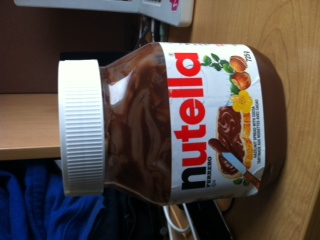 ) ) |
As lazy as I am when it comes to making food, Nutella comes very handy in laying on top of my toast for breakfast and having to eat it with salted crackers as a snack. Having a spoon of Nutella is great as well as the taste is just too good! | 1. How can Nutella last very long after opening the lid? 2. How is it so spreadable and doesn't drip apart? 3. How exactly is the Nutella chocolate made? 4. Where does the 4% Iron/Fer come from? 5. Is it better to leave it outside or should I rather leave it in the fridge?
1. Nutella has a very high sugar content which helps extend its shelf life. The sugar molecules are known to decrease the rate of water activity, directly preventing any further bacteria, since it is less likely for bacteria to grow at low water content/water activity. The container is another essential factor to why Nutella last long. This container is made so that when closing the lid, oxygen is completely shut out from the Nutella inside the container which also prevents from the products going bad and bacteria/moulds growing. (Lesson 4/5) 2. Nutella consists of fat as well, and the spreadable feeling is very similar to those of butter and margarin. Nutella also consists of emulsifiers such as soy lectin and whey protein which is used to firm up the spread and keep the ingredients from separating. (Lesson 2) 3. It is difficult to answer how exactly Nutella is made, otherwise this product would not be one of a kind and then would not sell. However from its website I determined that over 50 hazelnuts per 13 oz jar is used, contains no artificial colors and no artificial preservatives. Other ingredients include sugar, palm oil, cocoa, skim milk, reduced minerals whey, soy lecithin, and vanillin, which is an artificial flavor. (from Nutella website) 4. I do not know where exactly fer/iron comes from, however huge intake of it is detrimental for your body. Once taken, it becomes part of your hemoglobin and myglobin. Hemoglobin carries oxygen through your blood to tissues and organs. Myoglobin helps your muscle cells store oxygen. (http://www.drugs.com/mtm/fer-iron.html) 5. The Nutella container suggests that we should leave it out in room temperature to retain spreadability, the lid completely close of course. If you leave it in the fridge, the fat/oil content in Nutella will freeze thus making it difficult to spread once you try to use it after taking it out of the fridge. Must refrain from exposure of heat, otherwise the fat/oil content in the Nutella will spill. http://www.eatbydate.com/other/condiments/how-long-does-nutella-last-shelf-life/ |
| Tsuyoshi Hamanaka | This is the almond chocolate I always eat when I am studying or doing my homework. Especially because I am lazy to cook, this chocolate saved me a lot. | 1. How can this product last so long even after the expiry date. 2. Why is the expiry date so far away? (I bought this one in December, expires in November 2014) 3. I am allergic to almond, but why don't I get a reaction from this. 4. Did this chocolate go through some special process in order to maintain this circular shape? 5. How can this chocolate made with almond being in the middle? (Chocolate coated perfectly even). | |
| Yin Ling Ho | This is the seaweed that my always use when she makes her sushi dishes and it always reminds me of her when I make sushi with this seaweed | 1. What kind of methods do they use to preserve this seaweed. 2. How do the food processor determine when the expiry date is for this food? 3. How do they ensure the consistency for all their products of seaweed. how do they keep the texture, colour and the thickness of the seaweed the same? 4. Why do they use this type of packaging if the seaweed sometimes becomes stale before the expiry date? 5. The ingredient list consist only of seaweed is this possible? |
Your Real Family Name that Starts with J
| Your Wiki ID | Photo of a Food You Like to Explore | Why Did You Select This Food? | Questions You Have about This Food |
|---|---|---|---|
| ijajalo | I make and eat sandwiches. I'm curious about what actually goes into making the products I use in my sandwiches. |
1. I think the packaging method used for this product is modified atmospheric pressure packaging or vacuum packaging. That involves changing the content of the gas in the food container to the composition that would be ideal for extending shelf life (Lesson 07). Once the product is opened, this gas composition is released and normal atmospheric pressure enters the container of food. Under these conditions, microbes will be more likely to grow and the product will be more likely to spoil. Most likely, the 7 day recommendation is what the manufacturer (and the regulations) consider a safe amount of time for the product to be exposed to natural atmospheric conditions. 2. While we did cover the regulations of fat content (assignment 2), we didn't really cover the process of changing the fat content of a food product. I think changing the fat content of turkey slices just depends on how much fat is added to the product in the manufacturing process. Turkey meat starts off rather lean. I think the production involves grinding up several pieces of turkey together and the manufacturer regulates the fat content by adding different amounts of fat at this step. For this product, if the manufacturer had 98 lbs of lean turkey meat, they would add 2 lbs of fat (ie/ skin, lard, oil). I may be able to find more information on the process in: "Meat Science and Applications" By Hui, YH. 2001 Chapter 18. 3. I think the liquid is most likely a salt solution. Most likely it adds flavour to the meat as well as reduces the growth of microorganisms on the food product. In lesson 06, it was mentioned that salt has the ability to bind to water and thus limit the amount of water that is available for microorganisms. This will inhibit their growth. Salt also has the capabilities to dehydrate microorganisms if used in high amounts (lesson 06). 4. Most like the cooking process is similar to the process I would use at home but on a much larger scale and with much more controlled conditions. To elaborate, I think a very large "oven" would be used to cook multiple pieces of meat at once. I think the temperature and time used would be not only ideal to cook the product, but to also ensure the growth of microbes is minimized. Furthermore, I think the cooking process requires all of the pieces of meat to be of the same size so that the same cooking conditions would be ideal for all of the pieces of meat. I may be able to find more information on the cooking process in these books: "Meat Science and Applications" By Hui, YH. 2001 and "Poultry Meat Processing" By Sams, Alan R. 2000. Furthermore, this "How it's Made" video on poultry deli meat slices fully answered my question: http://www.youtube.com/watch?v=MAbt5lNwx3c 5. Freezing generally extends the shelf life of a product. It causes the water present in the food to be frozen into ice. This means there will be less active water in the product. As you further lower the temperature, there will be less and less water that bacteria can utilize. With the reduced content of available active water, the rate of microbial growth would be reduced. It should be noted that low temperatures do not necessarily kill microbes; they simply prevent their growth. This information can be found in lessons 05 and 07. | |
| ToddJury | I put hot sauce on almost everything. My parents and sister put hot sauce on almost everything. I am wondering if all this hot sauce can be harmful. |
| |
| tjiang | I love meal replacement shakes. Gives me quick energy in a morning when I don't have time to cook breakfast! |
| |
| ShelbyJenkins | This is one of my favorite drinks. As I don't drink juice or pop, it's a nice alternative without so much sugar. I love how fizzy it is and the different flavors available. |
1. Is there any scientific evidence of its health claims?
2. How long after opening is it safe to consume?
3. After a few days of being open it loses fizz, does this have an impact on the supposed health benefits (ie. is it an indication of a change in the bacterial cultures)?
4. Does the fermentation process stop when the kombucha is bottled?
5. If the fermentation stops when bottled, why is this?
|
Your Real Family Name that Starts with K
| Your Wiki ID | Photo of a Food You Like to Explore | Why Did You Select This Food? | Questions You Have about This Food |
|---|---|---|---|
| CelineKoppenaal | Whenever I am in a rush, I like to make this soup because it is really quick and tastes delicious. I also like to add kale or broccoli to it. | 1. The back of the can states that there are no preservatives. How can it last for such a long time without preservatives?
2. Will eating canned soups like this one affect my health since most cans contain bpa? 3. Will the vegetables in this soup contain all their nutrients compared to adding fresh vegetables? 4. Why do canned soups typically have a lot of sodium? 5. Is the soup fully cooked in the can or partially cooked? 1. The can is able to last for a very long time without preservatives because it has been through thermal processing. This process sterilizes the can of food so that no bacteria exists (Lesson 6). 2. We did not talk about bpa in FNH 200 but I think that since most companies are making bpa free products and there is a general consensus that bpa is harmful to us, it is reasonable to assume that bpa in cans could affect a persons health. When I have time, I may read this article “BPA and you, your family and your patient's health” written by Beverley Wright published in Podiatry Review. 3. Since the vegetables in the can have been cooked for a minimum treatment of 121°C moist heat for 15 minutes (Lesson 6), they are most likely overcooked which does result in a loss of nutrients. In addition, high temperature, short time nutrient destruction occurs at a lower rate than lower temperature longer time processes (Lesson 11). If the can of food has a pH above 4.6, the can of food has to be exposed to high temperatures for long times to achieve the 12D thermal process. 4. We did not talk about this in FNH 200 but Lesson 5 states that salt, in very high concentrations, may have a dehydrating effect on the microbial cells. In contrast, Lesson 6 states that salt can have the effect of protecting spores and vegetative cells from the killing effects of heat, thus requiring use of longer exposure times or higher temperatures for processing those foods exhibiting these protective effects. Given that a lot of canned soups have a lot of sodium in them, I would think that if the salt was protecting spores from the killing effects of heat that it was pretty minor in terms of how much longer the cans had to be processed or else the companies wouldn’t add so much extra salt. I also think that adding salt must have a dehydrating effect on the microbial cells as well as contributing to the flavour of the food which is why most canned soups contain a lot of sodium. 5.The soup is fully cooked in the can as it has to go through thermal processing. This process requires that every particle of food in the can is cooked for a minimum of treatment of 121°C moist heat for 15 minutes (Lesson 6).
| |
| Katiekwan (kwank317) | I am obsessed with eating hummus with everything! I particularly like spreading it on bread, crackers or dipping vegetables, chips into the hummus. My favourite would be dipping celery or carrots into the hummus. | 1. Are there a lot of carbohydrates in hummus? Chickpeas have 5-6g of sugars and carbs are a type of sugar. 2. Why is eating hummus considered healthy versus eating other dips? Hummus is certainly part of healthy diet but it is high in fats. It is healthy because it contains a good amount of suggested daily intake of finer. It is also good for you because of the protein it gives you. 3. How many chickpeas are needed to make a full tub of hummus? Normally 14-20 ouches of chick peas makes 4-6 cups of hummus. 4. How long does hummus stay good until it goes bad? Depends on different factors such as whether or not it was homemade or not. For homemade hummus, the shelf life is 3-5 days in the refrigerator. Whereas unopened packaged hummus lasts in the refrigerator for 3-10 days. And both can lasts for 6-8 months in the freezer. 5. Is hummus very good for your health? Compared to other spreads, yes. But it is high in fat. High in protein which is good and it contains a lot of fiber which makes it favourable for a healthy diet. | |
| Peggyku | I love eating chips. I especially enjoy pop chips because I like the saltiness of the original flavour and the crunchiness of the chip. I always find myself eating a lot of it without getting sick of it. The fact that it claims to be a healthier alternative to your regular potato chip also draws me to it. | 1. The package says that there are no preservatives in it, yet the best before date is August 19 2014, so what is in these chips that makes it last so long if there are no preservatives in it?
2. Are these chips really that much healthier than your typical potato chips such as Lays original chips? 3. What is it in potato chips in general that makes it so unhealthy for the human body? 4. The package claims that they don't bake or fry their chips, then how are their chips made and how is this process better than baking and frying the chips? 5. Do chips have an expiry date? (not best before date) How long can they last in the panty before they become unedible? 1. Well there is no expiry date which means that the product lasts longer than 90 days (lesson 4). Since there are no preservatives in it, I believe it is chips themselves that have the ability to last long. However, to keep it nice and crunchy it is best to keep it away from oxygen, light and moisture (lesson 6 and my team project). 2. What makes these pop chips healthier is the fact that they dont bake or fry them, therefore, there are no hydrogenated oils or MSG. So these pop chips are considered healthier do to that fact. This information was also found on pop chips website as it was not covered in class. 3. We did not discuss potato chips specifically in class, but I did study Potatoe chips in my team project. Potato chips are unhealthy do to their high fat content due to the cooking process of deep frying. A diet consisting of high fat intakes will most likely lead to weight gain, obesity, and cardiovascular disease. 4. We did not talk about this in this FNH 200 course, but after some research on the popchip website I found that they used heat and pressure to “pop” the chips. 5. For question 5, the chips don’t have an expiry date because expiry dates are only required for products with a storage life of 90 days of less (lesson 4). As long as they are kept in desirable conditions, like away from oxygen to prevent oxidation and away from light and away from moisture, they can last for greater than 90 days and onwards (lesson 6 and my team project). | |
| Jdwkang | Ever since I entered university, pasta has been my "go-to" food choice whenever I wanted to make a simple yet filling dish. I have tried numerous combinations of pastas and sauces, such as linguine and seafood in spicy tomato sauce, penne with grilled chicken in alfredo sauce, but my favourite is rotini in a rose sauce with spicy Italian sausages. The versatility of pasta intrigues me as to what their properties are. | 1. Do the different methods of shaping the pasta into different affect the nutritional values?
2. How long can dried pasta be edible for? 3. What are the effects on the human body when consuming raw pasta (both short term and long term effects)? 4. Does the quality of the wheat used in the process of making pasta affect the price? If so, what are the specific differences? 5. How does regular pasta, made from wheat which was normally cultivated, differ in taste and nutritional value compared to pasta made from GMO wheat? | |
| kkarnik | I really like Teriyaki flavored beef jerky. I think it is a convenient snack food and my favorite road trip food. | 1. Is beef jerky a good substitute for other types of protein? 2. Is there a difference between Canadian and American jerky? (How it's made? Difference in quality?) 3. What kind of beef is used? 4. Is the Teriyaki sauce made any differently when it's intended for beef jerky? 5. How come beef jerky is preserved for a year but once you open it you should eat it within three days? |
Your Real Family Name that Starts with L
| Your Wiki ID | Photo of a Food You Like to Explore | Why Did You Select This Food? | Questions You Have about This Food |
|---|---|---|---|
| TashaLee | This is a side dish I like to add on fried rice or noodles, because it enhances the taste. However, I don't mind eating it plain either. It's addictive! (really oily though...) | 1) Why does it have a shelf life of three years?
A: Because it was processed before packaging to "kill or delay metabolic activities" of food spoiling microorganisms (Lesson 5).
A: Being immersed in oil prevents air-borne (aerobic) or water-borne (if used aqueous solution instead) microorganisms to grow and spoil the product by lowering water activity (Lesson 2, 5). Soybean oil was used (included in the ingredients).
A: None according to the Canadian definitions in the Food and Drugs Act of Canada (Lesson 4).
A: Yes, to prevent enzymatic browning as another step in the process of preservation (Lesson 5). It is called thermo processing where the food is cooked until the most heat resistant pathogens are sure to be killed (Lesson 5).
A: As explained in the answer to question 1), it was already processed so to ensure it's not contaminated with microorganisms before packaging. After opening the jar, microorganisms can be introduced through the air and initiate spoilage. Refrigeration slows the metabolism of most spoil-causing microorganisms by lowering the temperature to below their growing temperatures; it also slows enzymatic activity (Lesson 5, 7). | |
| Darius88 | I chose this food because I love ice cream, but recently have been more health conscious so I eat this as a healthier alternative to satisfy my ice cream cravings (It doesn't taste as good as the real thing though!). | 1) If you adjusted the fat percentage, how would the taste change?
Adjusting the fat percentage will have an effect on taste and textural factors. Lesson 2 states that fats contribute to the overall flavour of food. 2) Why is the ‘cookie’ soft? This is most likely the result of fluctuations in temperature that affected the texture and quality of the cookie. This relates to Lesson 7, specifically the section on the freezing and frozen storage of foods. 3) If the ice cream sandwich was left at room temperature, how long would pass before it would go off? This would be best answered by conducting an experiment. You could probably also make a prediction based on the time it would take for the ice cream to thaw at room temperature and the rate of microbial growth of spoilage-causing microorganisms as the ice cream thawed. 4) Why does it say that it may contain peanuts and tree nuts? Due to the possible risks associated with allergies, although the product might not actually contain any peanuts or tree nuts, many products have a warning that the product may contain traces of peanuts or other nut products (Lesson 2). This is due to the severity of nut allergies that can be triggered with just nut residues that cannot be removed from processing equipment even with cleaning and sanitation. Thus, this warning is used to indicate that the food was processed with equipment that was used for nut containing products. 5) Could the ice cream be made from other kinds of substitute milks such as almond milk, oat milk, rice milk or soy milk? I’m not quite sure about this. You could probably use a milk alternative when making the ice cream, but due to the lack of fat, differences in flavour and consistency; there would need to be a lot of experimenting to create a similar texture/consistency to normal ice cream (since ice cream’s creamy texture is mainly due to the fat in the milk and cream). | |
| Christella Lee | Hainanese kaya jam is one of my favourite jam to eat with bread. Its texture is similar to humus. In asian country, like Singapore, Malaysia, and Indonesia, people usually consume this jam with toasted bread. |
1. What makes the texture of kaya jam creamy? According to Lesson 3, the fat Olestra contributes to the creamy texture of the kaya jam. Moreover, this fat is a result of heating the coconut extract where fats and sugar in coconut are broken down. 2. What gives the jam a brown colour? The kaya jam contains egg which contributes to the brown colour. In lesson 2, we also learned about browning reaction. In the case of this kaya jam, the honey, which contains sugar, creates a caramelization reaction during the process of cooking the jam. In this reaction, sugar gives a brown pigments to the jam. This is why kaya jam is brown in colour. 3. Is this from the real fruit called "srikaya"? Although this jam is called "kaya jam", the jam itself is mainly made from coconut extract, not srikaya fruit. 4. What kind of fat is in the jam? The jam has a creamy texture. in lesson 3 we learn that Olestra, a molecule of sucrose and fatty acids create a rich taste and creamy texture in food. Therefore this jam contains a fatty acid in it. In addition, this Olestra contains fat soluble vitamins such as vitamins A, D, E, and K. 5. Is it safe to be consumed by lactose intolerant consumers? In Lesson 2, we learn that cow's milk contains lactose. Lactose intolerant people do not have enzyme that helps to breakdown lactose in their body. When these people consume lactose product, it can cause extreme internal discomfort. The jam uses coconut milk extract instead of milk. Therefore this jam is safe to be consumed by lactose intolerant consumers. | |
| Luan Li | I chose to use a homemade pizza, as we currently don't have any frozen pizza stocked up. Despite tossing all the toppings together, I know that I purchased the pizza shells, olives, cheese and vegetables from grocery stores and each ingredient is a processed food on its own. | 1. Who determines what ingredients/flavours to use in a mass produced frozen pizza?
Food company professionals determine the ingredients and flavours used in a particular product, although the pizza must abide by food product labelling, packaging and other regulations from the Food and Drug Act, CFIA, and Industry Canada. (Lesson 4) Since pizza does not have a standard of identity, food company professionals can take a lot of liberty in making up new flavours! (Lesson 4) 2. How would the nutritive value of the frozen pizza compare to the fresh pizza? Due to the storage conditions of the frozen pizza, some loss of nutrients is inevitable. For example, it has been shown that vitamin C loss occurs during freezing. However, freezing as a method for food storage is less intrusive than some other storage methods, such as commercial sterilization used in canning (Lesson 6). Note that this discussion pertains to cooked pizza, that is then frozen. 3. What happens during quality control? Though it is not explicitly stated in the lesson content, it is likely that the HACCP system will be established to monitor the quality of assembling the pizza, baking, cooling and packaging and other processes. Critical control points will be established and corrective measures will be conducted and recorded. This will eliminate most risk and food safety concerns at every step of the process, thus rendering a product that is food safe, fresh, up to standard and delicious to eat. 4. How can the taste of frozen pizza be enhanced so that it doesn't taste like old pizza? Various storage techniques can be used to ensure that the pizza still has good quality, while keeping food safety concerns in mind. For example, air freezing, indirect contact freezing may be used to quickly decrease the internal temperature in the pizza (Lesson 7). The plastic packaging surrounding the pizza also prevents water from escaping and thus dehydrating the product (Lesson 8). 5. What additives are added to ensure shelf life? Frozen pizza is considered (based on educated guess) a semi-perishable food, since its storage properties are similar to ice cream and cheeses, meaning that it has a shelf life of two to six months if stored properly (Lesson 5). Sugars and salts may be added for flavour and also for their water binding properties, which may inhibit microbial spoilage (thus many frozen pizzas taste really salty). The acid in tomato paste may also inhibit some microbial growth, since bacteria do not grow well below pH 4.6 and tomato paste is a high acid food (Lesson 5). Sodium propionate (bread mould inhibitor) and sodium benzoate (inhibits acid-tolerant bacteria) may also be added to the frozen pizza, since they both enhance the shelf life of the product. Other components such as carbohydrate constituents and gums may keep the consistency and texture of the pizza, working indirectly to maintain its shelf life. (Lesson 2)
| |
| D.Latchman | Raffaello is one of my favorite Ferrero products. It is the perfect combination of coconut and almonds which tastes just as good as chocolate. It has a delicate crisp and the cream melts in your mouth giving an unbelievable sweet taste. Definitely a family favorite with 63 calories per piece. | 1. Why is Raffaello made with milk cream and not chocolate like other Ferrero products?
Raffaello is made with milk cream to give the product a unique taste, different from other Ferrero products made with chocolate. The milk cream is made from the butterfat layer found on top of the milk prior to homogenization. According to lesson 2, the fat content of the milk cream makes the Raffaello balls more palatable and gives it a smooth light texture. Since fats act as a lubricant, Raffaello can be easily chewed and swallowed. 2. What kind of wafer is it made with to give it the soft delicate crisp? Does it have any artificial flavouring? Raffaello is made with bland wheat wafer. The wafer is lightly sweetened and surrounds the almond and milk cream filling. The wafer contributes to the crunchiness of the Raffaello. As for artificial flavouring, it contains flavourings (names not listed), modified (palm, sunflower) fats and lecithin. The fats contribute towards its overall smoothness and texture. Lecithin is a type of phospholipid that is a naturally occurring emulsifier. It is found in soybean oil and egg yolk. Lecithin is most likely used in the process of making Raffaello to assist in the formation of emulsion, reducing the interfacial tension between oil and water phases (Lesson 2). 3. Why does the package suggest to keep it in a cool dry place? What will happen if I put it in the fridge? The package suggests to keep it in a cool dry place because this item is temperature sensitive. Exposing it to extremely high temperatures will cause the desiccated coconut to become very oily and the cream will most likely lose its flavour. Keeping it in the fridge is not a good form of storage because it will interfere with the coconut sticking to the wafer. The product will ultimately lose its crispiness if not stored as recommended. 4. What type of shredded coconut do they use? Is it sweetened or unsweetened? The shredded coconut enhances the overall taste of Raffaello. It contributes to the crunchiness as well as smell. Each piece of Raffaello is rolled in unsweetened desiccated coconut since the milk cream and wafer adds to the sweetness as well as sugars added. The way desiccated coconut coats the smooth wafer, contributes to our perception of the appearance of the product. The white color and crunch of the coconut indicates the superior quality of Raffaello (Lesson 2). 5. What are the processes involved in making Raffaello, from raw materials to finished product? The detailed information on Raffaello processing is not outlined in detail. It is made with an almond surrounded by milk cream. Then the milk cream is encased in a fine, delicate and crisp wafer sprinkled with tender shredded coconut. Each step is monitored to give the overall perfect taste. | |
| Xiaodong LIU | Honey castella is like traditional food in my family. I love the sweet and soft tasting,It's like a convenience package and suitable for lunch,picnic or party. But I prefer the tasting of honey castella which just baked. | 1) Why expiration date of honey castella can be as long as 9 days ?
2) Why honey castella have pretty soft tasting? with which material? 3) How producer calculated the percentage of fat and protein? 4) How this honey castella make as trans fatty acid=0g? 5) Why honey castella do not need keep fresh in cool dry place? My answers 1)In lesson7, as we talked about the modified atmosphere packaging, which refers to the creation of atmospheric conditions around the product that are different from the normal atmosphere.The process usually try to lower the amount of oxygen,in order to slow down the growth of aerobic organisms and the speed of oxidation reactions. Moreover,the removed oxygen can be replaced with nitrogen,which can lower the the PH or inhibit the growth of bacteria. so It can be stay for a little bit longer. Another reason is aeration.which add air to batter and doughs. the fat surrounds the air molecules that are being incorporated into the batter.they contribute to the formation of the dispersion by decreasing the viscosity in the batter.(lesson2) 2)In lesson2, we learned gluten. a protein in wheat flour,traps air bubbles in bread making.It's a kind of foaming 3)As we all know, the food labeling requirements has the nutrition facts table. there are few labels about fat and protein.To determine the total fat,add the weight in grams of all lipid fatty acids in the food,Total fat = Weight of all individual fatty acids + weight of one unit of glycerol for each three fatty acids. for protein,the actual amount of protein in grams per serving by multiplying the amount by its amino acid score corrected for protein digestibility. 4)The producer didn't use partial hydrogenation. So that's like reduce the risk of this food. and followed by claims allowed in Canada 5)It is generally not recommended to refrigerate bread because it will become stale more quickly. Besides, this food is packaged in moisture and vapor-proof wraps which are good for storage. | |
| LizLund | Nutella is an easy snack I like to put on toast when I'm in a hurry. I love the taste of chocolate and hazelnuts together, and I eat it when I'm craving something sweet. | 1) Why does the oil not separate over time like natural nut butters?
2) How does it have such a long shelf life of about six months after opening? 3) Is there a significant amount of caffeine from the cocoa? 4) What purpose do whey powder and soy lecithin have as ingredients? 5) What makes it so spreadable? 1) The oil does not separate due to the addition of an emulsifying agent (Lesson 2). I believe that the main emulsifier is the ingredient whey powder, since whey is a good source of protein. In Lesson 2, it was discussed that protein is often added to prevent the coagulation of a food by stabilizing fat emulsions. Since the sole ingredient in natural nut butters is nuts, there is no emulsifier to prevent the natural separation of oil to the top. 2) Sugar is the first ingredient listed in Nutella, which indicates sugar is the largest proportion of all ingredients (Lesson 4). The high sugar content of Nutella extends the shelf-life by preventing microorganism growth by effecting the water activity (Lesson 5). The sugar molecules bind to the water molecules, thus lowering the available water and preventing the growth of bacteria and yeasts that cannot survive in a low water content (Lesson 5). Another technique that extends its shelf-life is the packaging's design which ensures oxygen is sealed out (Lesson 5). Nutella comes in a plastic jar with a metal seal underneath the plastic lid. By keeping oxygen out with a metal seal, moulds can be inhibited from growing. (Lesson 5). 3) Cocoa is listed as the fourth ingredient (behind hazelnuts) out of eight ingredients. Since labelling requires ingredients to be listed in decreasing proportion, this makes it difficult to determine if there is a significant amount of cocoa in Nutella (Lesson 4). Although flavour analysis would make me believe there is a significant amount of cocoa, and therefore possibly caffeine as well. Caffeine was not covered in FNH 200, but I hope to learn more about it by taking a food chemistry course next year. 4) According to Lesson 2, the functional property of lecithin is to act as a naturally occurring emulsifier. The functional property of whey powder was not explicitly stated in any of the lessons, although we did learn of its functional properties in yogurt from Assignment 2. Although Assignment 2 was specifically about yogurt, I believe it can be assumed that whey protein serves many of the same functions in Nutella. From Assignment 2, we determined that the functional properties of "whey protein" were to increase protein content, improve flavour, improve texture, reduce syneresis, and extend shelf-life. 5) I believe Nutella is especially spreadable due to its high fat content. The jar suggests keeping Nutella stored at room temperature to retain spreadable, which I believe is because fats become more solid and less spreadable at lower temperatures (Lesson 2). I can also conclude that the spreadable quality of Nutella is due to fat since it has a similar quality to butter and margarine, in that they are especially spreadable when heated up (Lesson 2). From Lesson 2, I can determine that the addition of the emulsifiers whey powder and soy lecithin also make Nutella more spreadable. Emulsifying agents help promote the homogenized mixture of different ingredients, which creates a spreadable paste consistency (Lesson 2). | |
| Yi-Yuan | Egg roll is a Chinese snack that I enjoy from time to time. Just recently I realized that it really looks nothing like an egg. So I would like to inquire how it comes to be. | 1. What are the processes in making egg rolls?
There wasn't too much information on egg rolls or as they refer in wikipedia biscuit rolls.From the limited information I got from wikipedia, its ingredients include wheat flour, egg, butter, sugar and flavouring. I assume the ingredients are mixed together and pasteurized to kill the microorganisms (Lesson#6). Afterwards the dough is probably rolled into rollers and subsequently cooked and dried. 2.Why are they so brittle (why do they have so much crumbs)? The biscuit rolls are brittle because they are made of pastry. They are also thinner than most pastries which made it more prone to breakage and crumbs. 3.How do they maintain their circular shape? I assume during the cooking and drying stage, the dough was in a roller until the processing is done to maintain its shape during and after cooking. 4.Why do they always come in a tin? I believe the biscuit rolls are so brittle that they need structural support during transport to maintain their shape for as long as possible. Tins are easier to transport and protects the rolls inside from the pressure of other foods during transport. 5.What makes egg rolls so dry? Biscuit rolls' peculiar shape meant that it is probably air dried like most food products. The dryness also contribute to the flaky texture that we all love so much. | |
| MatthewLeung | I chose Nature's Path Flax Plus because I usually eat cereal for breakfast every morning. I chose this brand in particular because it labels itself as organic and Non-GMO. | 1. Tocopherols are added to maintain freshness, are there any benefits to using tocopherols compared to other preservatives, in terms of health?
2. The Box says "May contain dairy", how would a dry cereal contain dairy? 3. What standards does this cereal follow to call itself "organic"? 4. What ingredient of the cereal contains Omega-6 and Omega-3? 5. GMO's are very common, where are these ingredients from to be completely GMO free, as said on the box? |
Your Real Family Name that Starts with M
| Your Wiki ID | Photo of a Food You Like to Explore | Why Did You Select This Food? | Questions You Have about This Food |
|---|---|---|---|
| McCoyMa | I enjoy PowerBars when I am about to play moderately intense sports - ball hockey, snowboarding and baseball, to keep me going and to help replenish lost nutrients and calories and compliment my increased intake of water and other sports drinks. It's easy to pack into my bag and seems healthier than other options. | 1. Does the nutritional value change when the PowerBar is not consumed with water or other fluids (as recommended by the company)?
2. The packaging is definitely different from your standard granola bar. How did they decide this was the best version for this specific bar? Did the flavour of the bar have any effect on this decision?
3. What level or amount of calories changes the bar's classification from simply a "nutritional supplement" to a full "meal replacement", ie. Vector cereals and bars?
4. Would the energy bar production differ if they used a different type of chocolate chips - white, dark, etc.?
5. They measure Vitamin A in RE. What does that signify?
| |
| Michniii or AnetaMichniak | I enjoy Almond Butter with almost everything such as spreading it on bananas, apples, and toast. However, I mostly eat a spoonful of it and I'm satisfied! This is my ultimate go-to snack for whenever I am on the run. Since it is purely made out of almonds it fills me up quite easily. |
1. Why is almond butter better than peanut butter?
2. What does the manufacturer put in to preserve the almond butter (if any)?
3. How does it become so creamy when the raw nuts are processed?
4. How long after the expiration date could I consume almond butter?
5. Does it need to be refrigerated? Is it best to leave it at room temperature? Why?
| |
| MattMuirhead | I chose this food because it's something that I cook often. It's an easy meal to make, and it's a good source of protein. There are many varieties of "stuffing" to choose from. I usually eat this chicken with pasta or on top of a salad. |
1. Does having the product stored in the freezer allow for the use of less preservatives? 2. What type of preservatives add the most calories? 3. How can you reduce the amount of preservatives in food without reducing the shelf life? 4. Do multigrain products expire earlier than non-multigrain products? 5. In order to advertise this product as a healthy food choice, are there any restrictions on the preservatives that go into it? | |
| Bret Macdonald | I chose Frosted Flakes because I constantly have it whether it’s for breakfast or even before bed. I love to snack on it due to the taste and I always have it stocked in my pantry at home. | 1. Are there any flavor enhancers? Yes there are. Certain additives are used in the production of Frosted Flakes to enhance the taste.
2. How much sugar is added to better the taste? I found there is about 25 grams of sugar per bowl of Frosted Flakes but I could not find how much sugar is added to enhance the flavour. 3. What are the main artificial substances? vitamin C (ascorbic acid and sodium ascorbate), niacinamide, vitamin B6 (pyridoxine hydrochloride), vitamin B2 (riboflavin), vitamin B1 (thiamin hydrochloride), vitamin A palmitate, folic acid, vitamin D, vitamin B12. 4. If no sugar were added, would it be considered a healthy cereal? No, because there are still certain additives in Frosted Flakes that make for an unhealthy breakfast item. 5. Is eating a bowl of Frosted Flakes equivalent to eating a bag of candy sugar wise? No, the amount of sugar in candy is far greater than Frosted Flakes, 1 piece of candy may have 5 grams of sugar and if you have 20 pieces of candy, which is highly likely, you would be having nearly 100 grams of sugar as opposed to Frosted Flakes where one bowl is 25 grams of sugar or so. |
Your Real Family Name that Starts with N
| Your Wiki ID | Photo of a Food You Like to Explore | Why Did You Select This Food? | Questions You Have about This Food |
|---|---|---|---|
| PaulinaNaylor | I drink it with every meal because I find it tastes better than regular milk and it has a lot of calcium. | 1. How do they create a milk from soy beans? 2. Why can it be stored unrefrigerated before opening? 3. Why is soy milk white? 4. Why do you have to shake the carton before you drink? 5. Does soy milk need to be pasteurized like dairy milks?
1. From lesson 2, I know that emulsifiers help keep milk emulsified. Although the details of the process of making soymilk were not covered in any of the lessons, I know that soy milk probably uses emulsifiers to maintain a milk-like quality. However, other sources say that the soybeans are soaked and grinded with water to form the milk. 2. From lesson 6, I know that products that have been treated with heat and are packaged under aseptic conditions are considered commercially sterile and do not require refrigeration before opening. Therefore, soymilk that has been treated with heat (pasteurized) and packaged in aseptic packaging (such as the one shown in the picture) can be stored unrefrigerated. 3.Although I am not certain whether soy milk is naturally white or not, I know from lesson 4 that food colouring may be added to foods to make products look attractive without deception, so maybe white colouring is added to soymilk. 4. From lesson 2, I know that certain foods require emulsifiers to prevent separation. Perhaps soymilk needs additional mixing before drinking because soymilk is an example of a sol (where proteins make up the solid dispersion). 5. Although soymilk lacks the psychrotrophic spoilage-causing bacteria that are present in milk (and therefore can stay refrigerated longer than milk - this also helps explain question 1), soymilk still requires pasteurization in order to kill other pathogenic microorganisms and to be commercially sterile (with the use of aseptic packaging). | |
| NaruekatpichaiNapat | Fried seaweed is my favorite snack. | 1. What nutrition does processed seaweed has? 2.Is baked seaweed healthier than fried seaweed? 3. On the ingredient label, they used "disodium 5'-inosinate" and "disodium 5'-guanylate". What are they? 4. Are there bad effects from consuming MSG. or substitute of MSG.? 5. How does the packaging process for fried seaweed work to preserve the seaweed? | |
| MarikaNoguchi | I love curry, and I hate cooking. Thus, instant curry is perfect for my lazy cooking skills. | 1. how do they preserve it? 2. how do the ingredients stay intact? 3. what are the base ingredients? 4. how different are the nutritional values of this compared to the real curry? 5. What are the health affects? |
Your Real Family Name that Starts with O
| Your Wiki ID | Photo of a Food You Like to Explore | Why Did You Select This Food? | Questions You Have about This Food |
|---|---|---|---|
| Mai Okutani | I use this miso paste when I am making miso soup. This miso paste contains Dashi(bonito fish stock) inside, which becomes the Umami in the miso soup. | 1.How does the dashi stock inserted in the miso paste?
2.It says "non genetically modified soybeans used, but is the genetically modified soybeans bad for our body? 3.In miso paste, there are smooth one and rough one but is there any nutrient difference between them? 4.What is the benefit of having miso ? 5.How the miso paste is being made? 1. Dashi stock inserted is in the miso paste by mixing Bonito Extract, Bonito Powder, Kelp extract. (According to ingredients on the label) 2. Health Canada concluded that genetically modified soybeans,Roundup Ready soybeans, “ are as safe as other commercially available soybean varieties, and are suitable for food use.” so it can be said that genetically modified soybeans are safe. 3. There was no significant difference between rough miso and smooth miso. However, there is miso that contains less salt and sodium is reduced to around 20%. 4. Through fermentation, miso is more nutritious than the unfermented original materials, and miso has higher levels of B-vitamins than soybeans. (Lesson 9) 5. Miso is manufactured by mixing soybeans, rice koji (moulds) and salt, and allowing them to ferment. Temperature is strictly monitored, and if the temperature was not high enough, koji will not play the agent role to change proteins to polypepties, peptides. Free amino acids, amines, which cause textual and flavor changes in foods (Lesson 9)
| |
| Miguel Olfato | I chose this food because it is easily accessible and I can take it on the go. This helps fuel me for an active day. | 1. How many of these bars do you need to consume to satisfy your daily protein needs?
2. What additives are used in its production? 3. Would it be good to use for protein supplementation? 4. Can it be used as a meal replacement? 5. Is it actually good for muscle recovery? Answers 1. We did not discuss in detail daily requirements for protein. However, depending on fitness goals, and body size, you would need roughly 1.8-2.0 grams per kg of body weight. This means you would need around 5-10 bars to satisfy your daily needs. 2. Additives include natural and artificial flavours, soy lecithin, salt, dextrose based on http://www.kelloggs.ca/en_CA/vector-energy-bar-chocolate-chip.html 3. Relating to question 1, you could use it as protein supplementation, but it will not be the most efficient compared to whey protein powder, soy protein, etc. 4. It should not be used for meal replacement because you would need to eat so much of it as compared to having a well-balanced diet. 5. It would aid in muscle recovery, but should not be the main source of nutrition for that purpose. |
Your Real Family Name that Starts with P
Your Real Family Name that Starts with Q
| Your Wiki ID | Photo of a Food You Like to Explore | Why Did You Select This Food? | Questions You Have about This Food |
|---|---|---|---|
| TonyQu | Popcorn is easy to prepare and tastes amazing! I love having popcorn as a snack in general, and is also easy to share if friends are over. |
1) What kind of reaction occurs to actually change its shape to a "popcorn"? 2) Why are the shapes always non-consistent? 3) Why do some popcorn not "pop" after a certain period of time while most others have popped? 4) Is it non-perishable? What makes it able to be preserved for so long? 5) Why do popcorns not require refrigeration? Answers: 1) What kind of reaction occurs to actually change its shape to a "popcorn"? Kernels contain water stored inside a circle of soft starch. When the kernel is heated, water expands. At 212 degrees, steam changes starch within each kernel into superhot gelatinous goop. The pressure will reach 135 pounds per square inch, which causes the popcorn to burst open. 2) Why are the shapes always non-consistent? Different amounts of water and unevenly distributed heat causes each individual popcorn to burst or “pop” differently. 3) Why do some popcorn not "pop" after a certain period of time while most others have popped? Popcorn that pop latest have least amount of water stored inside the kernel, thus causing less pressure, which eventually causes the kernel to burst open. 4) Is it non-perishable? What makes it able to be preserved for so long? High salt in popcorn causes dehydrating effect on microbial cells. Furthermore, since it is the oxygen in air or within a food that determines whether a food can support the growth of aerobic or anaerobic microorganisms, popcorn tends to last longer because it is closed-packaged when manufactured. 5) Why do popcorns not require refrigeration? Lesson 5: Lowering temperature of a food decreases the rate of enzymatic, chemical and microbial reactions in food thus extending storage life. Microbial growth rates decrease as temperatures decrease towards 0°C. Popcorns are packaged in such way that microorganisms cannot grow unless already in the package.
|
Your Real Family Name that Starts with R
Your Real Family Name that Starts with S
| Your Wiki ID | Photo of a Food You Like to Explore | Why Did You Select This Food? | Questions You Have about This Food |
|---|---|---|---|
| CRuizLarrea | I really like jam, and I've been having it for breakfast for many years and I was wondering if it was good for you. | 1) Do they use actual strawberries or is it just artificial flavours?
2) What is the ratio of sugar to strawberries? 3) Does it contain many additives? 4) Is it good for you? 5) Is there a specific brand that is better for you? 1) Looking at the label. Look at the list of ingredients which is one of the food labelling requirements by CFIA (Lesson 4). They do use strawberries as the main ingredient because it is the first ingredient on the ingredient list. 2) This ratio depends on the manufacturer. Sugars produce a body and mouth feel (lesson 2) which may increase use of sugar in order to have a positive feel. And also sugar acts as a preservative by binding to water molecules (lesson 2) 3) According to the Food and drug regulation and the definition of food additives, there are no additives in the jam. (Lesson 4) http://laws-lois.justice.gc.ca/eng/regulations/C.R.C.%2C_c._870/page-160.html#docCont 4) This totally depends on what an individual considers good or bad. It is good because it does not contain a additives (lesson 4). Also, looking at the nutrition label, the first ingredient is strawberries therefore even though there is a large quantity of sugar in the jam (Lesson 2,4) 5) There may be a specific brand that is better or worse for you. Depends what an individual is looking for. Some brands have health claims (Lesson 4) therefore an individual may be interested in one or more of those health claims. | |
| HayRoe | 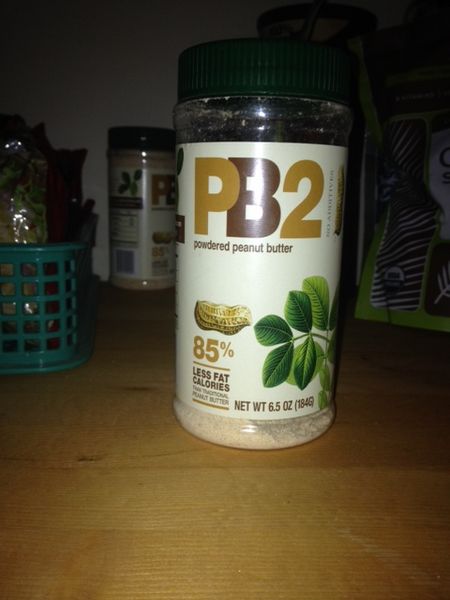 |
I selected this food because it is my most preferred form of peanut butter and seems to be, from personal beliefs, a healthier and lower fat alternative. I have also always been curious to learning more about this product. | 1. How do they press the peanuts? 2. How many peanuts would you need to create this product vs. a regular peanut butter. Is it efficient? Wasteful? 3. How is the fat expelled? 4. How is this product preserved? |
| Kristina Richmond | I love kale chips. They are one of my favourite foods to eat as a snack. I'd like to know more about how they are made. | 1. How do they remain crispy for long periods of time?
2. What needs to happen during shipping and packaging in order for them to retain their shape without getting broken too much? 3. How does the dehydration process work? 4. How important is the packaging in maintaining the freshness of the kale chips? 5. What is the longest period of time these could last, and still be safe to eat? | |
| ShraavanRaveendran | 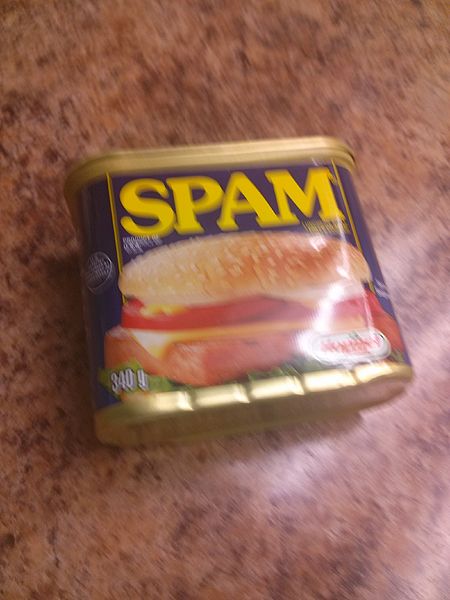 |
Unlike fresh meat from the grocery store I do not have to spend much time cooking it, since it is perfectly fine to eat uncooked. It has a long shelf life and it is my go to food to make at home, when I run out of other protein in the fridge. |
1. Why is there such a high sodium content? (33%) As we learnt in Lesson 5, in order to make this food shelf stable, a method that was employed was raising the salt content; Sodium acts as a preservative. This essentially lowers the water activity in the food, dehydrating microbial cells and prevents their growth. Sodium is added in two forms: Sodium Nitrate and Sodium Nitrite. Sodium Nitrate gives the SPAM the preservative properties listed above. Sodium Nitrite on the other hand is an additive used to give the meat the nice pink colour, otherwise it would look a lot less appetizing… 2. Which part of the pig do they use, and why is the protein content so low in that case? This is a question that does not pertain to this course but after some research I found out that they use pork shoulder, buttock and thigh (ham) that are all processed together. As for any fillers used in the product; the USDA does not allow pig snouts, lips or ears to be used so we do not need to be worried about eating any of that. 3. Why does this sort of meat not need refrigeration? Processing involves heat sterilized to ensure that the meat is cooked and all the bacteria and spores are killed. This is done in a hydrostatic cooker. Along with the addition of preservatives as mentioned above as well as being sealed in a closed environment impeding the growth of any microbes. After processing and sterilization, the cans are kept for 10 days in the processing plant to test for proper cooking and that there are no bacteria that survive (USDA policy). 4. What part of the meat processing allows it to have such a long shelf life? As mentioned above, it is the heat sterilization aspect that kills all the bacteria. 5. Why is potato starch added as one of the ingredients? As we learnt in Lesson 2, starch is an important ingredient in food. In SPAM it acts as a thickener and a gelling agent. Making the product nice and pliable, overall enhancing the textural aspect of the food. Interestingly enough, it is because of this ingredient that leftover SPAM left in the fridge is much harder the next day because of retrogradation (hardening and drying of meat). Sources: http://www.madehow.com/Volume-6/Spam.html http://www.livescience.com/32813-hormel-spam-no-mystery-meat.html |
| JieRen | Mango is my favourite fruit of all times. Since carrying fresh mango around as a snack is difficult, these naturally flavoured dried mangoes become very convenient. |
1. Just how much sugar is added to keep them this sweet? 2. What do sulphites do? (Only other ingredient next to mangoes and sugar) 3. What keeps them fat free? 4. What makes them safe for consumption within a year? 5. What makes up the carbohydrates in them? (11% in 8 pieces) | |
| Emily Reid | This is one of my favourite processed foods since there is some decent nutritional value to it, and it is convenient to eat whenever I am hungry. |
1. Can it be used as a replacement to regular fruit? 2. What does it mean if something is from concentrate? 3. What does "natural flavour" mean? 4. Is the best before date accurate, or is it safe to eat a few months after? 5. Is 29g of sugar a large amount to eat from such a small snack? 1. While this fruit snack does say it is equivalent to 2-3 servings of fruit, given the concentration processing of the food, there are differences to it that actually alter things like nutritional value. When food goes through processing it can lose nutrients. Lesson 5 taught me that factors such as light, oxygen, temperature, etc., could impact how much is lost. Therefore while there are still nutrients, it is not the same as eating regular fruit. 2. Concentration implies that some of the water is removed from the food in order to concentrate the food constituents. Concentrated food can be sweeter since there is less water in the product. Lesson two describes how the amount of water in a product can change the level of concentration. 3. Natural flavours mean the company has not chemically altered the food to make it taste a certain way. The taste comes directly from the ingredients used. The Canadian Food and Safety website would have more information on what the exact definitions may mean. 4. Based off of lesson 5, this fruit snack would be a semi-perishable food that lasts between 2 – 6 months. This means that some preservation methods have been used to keep the food from spoiling. Usually with a product like this it would be okay to eat a few weeks after the date, only if the packaging was in pristine condition as to avoid contaminants. Otherwise it may be safer to just throw it out. 5. There is no prescribed amount of sugar according to Canadian regulations but given the amount of hidden sugars I’ve learned about in lessons 4 I would assume it is on the high side. Lesson 4 taught us the importance of reading labels and the requirements that Canada has for revealing product information such as if any sugars were added.
| |
| Katelyn Ross | I eat natural peanut butter almost every day for breakfast. I like it because it's crunchy and it keeps me full until lunch. |
1. Is there any sugar added to it? Looking at the label, it is clear there is no sugar added to the peanut butter because in total there is only 1 gram of sugar. 2. Do they use real peanuts? Yes, they use real peanuts because they make the claim that it is 'natural'. 3. What do they add to make is so viscous? Nothing is actually done to the peanut butter to make it more viscous. The liquid part of the spread comes from the separation of the fat molecules (peanut oil) from the rest of the food substance at room temperature. By placing it in the fridge, the cooler temperature inhibits this separation from occurring and thus the peanut butter remains one constant consistency throughout. 4. Can all the products of it be broken down and digested in the body? Because it is a natural product and there are no additives, all components can be digested by the body. 5. Is it healthier than other, not "natural" peanut butters? Yes, the natural peanut butter is a healthier option because there is much less sugar in it. |
Your Real Family Name that Starts with T
| Your Wiki ID | Photo of a Food You Like to Explore | Why Did You Select This Food? | Questions You Have about This Food |
|---|---|---|---|
| OliverSy | I rely on Greek yogurt for part of my carbohydrate and protein intake if I need something that I don’t need time to make. Its higher protein content allows me to eat it on its own, without adding other ingredients. It also tastes great! | 1. What is added to give it higher protein content than regular yogurt?
2. Why do some brands have way higher fat content than others (excluding fat-free ones)? 3. Will eating Greek yogurt alone be enough in terms of probiotics and gastrointestinal health? 4. Is the expiry date on it strict or do you have more time than what’s written on it before it spoils? 5. In some cases, why is it less “watery” than the regular yogurt? ANSWERS 1. The answer to this question is related to the “Technology of Fermentation” section in Lesson 9. Unlike in the production of regular yogurt, the fermented milk is strained more in comparison, thereby draining the liquid and the whey. The resulting product that has less in overall volume, which means that the product is more concentrated; producing a yogurt with a “higher” protein content after packaging. 2. Very similarly to Question 1, the reason for the higher fat content in some Greek yogurts is due to their higher concentration. Since the product is strained of the whey after the milk has been fermented than regular yogurt (Lesson 9), a more concentrated product (including fat) is what results. 3. As mentioned in the other questions, Greek yogurt is more concentrated than regular yogurt. As a result, its probiotic content is higher than regular yogurt as well. According to Lesson 9, probiotics provide us with great benefits when ingested. However, relying solely on one source for probiotics, or any nutrients for that matter, may not be ideal. I plan to further research “allergies and enzymes” to learn more about the possibility of becoming allergic to foods if consumed on a regular basis, without variety, due to the use of the exact same enzymes every time. 4. As mentioned in Lesson 4, products (properly stored) that have gone past the ‘best before’ date are safe to eat. Moreover, the higher acidity levels of Greek yogurt (Lesson 9) as well as the “good” bacteria found within them (Lesson 9) both aid in the extension of its shelf life. 5.Greek yogurt is less “watery” than regular yogurt because much of the liquid (whey) has been strained after the milk has gone through fermentation (Lesson 9). Unlike regular yogurt, Greek yogurt is strained to remove the liquid (whey) (Lesson 9). This makes the product much more thick, creamy, and concentrated than the regular yogurt. | |
| CSontani | I like to eat this with my whole wheat toast most of the days for breakfast. The reason why I started liking this so much is because it feels like I'm eating both cream cheese and strawberry jam, which are what I like. | 1. Do they really use strawberry puree and natural flavour?
considering that it is required for the company to list down the real ingredients in the packaging (lesson 4), I would say that they do use strawberry puree and natural flavour to give the strawberry flavour for the cream cheese. 2. Is it bad to eat this too much? looking at the nutrition facts, it's not the healthiest thing to eat this a lot. It is high in cholesterol and a lot of calories if you eat too much. 3. Is it the same as eating plain cream cheese? in terms of ingredients, strawberry and cream cheese are almost the same except that strawberry cream cheese has strawberry flavour added to it. 4. It only has 2% of calcium (which made me think of dairy), is there any benefits at all from eating this? based on the nutrition facts, I wouldn't say there are benefits from eating this other than the taste. It's not a healthy product judging from all the nutrients that it gives. 5. Can it really lasts a year considering it's a dairy product? this product contains sorbic acid which is used as preservatives (lesson 4). It is acidic enough to be able to kill bad microbes therefore prolonging the shelf life of the product (lesson 5). | |
| CarmenSham | One of my favourite snacks to munch on! I prefer dark chocolate over milk because of it's slightly bitter taste, milk chocolate can get too sweet for my liking. | 1. Does dark chocolate require less processing than it's milk and white chocolate cousins? It does require less processing compared to milk and white chocolate. This is because milk fat and sugar are not added to or added in very minute amounts to the dark chocolate mix.
2. Can dark chocolate really lower the risk of cardiovascular diseases? There have been no significant findings that dark chocolate can lower the risk of CVD. This may be due to the the fact that the milk fat added to milk or white chocolate contains a considerable amount of saturated fats. 3. How shelf-stable is dark chocolate? With proper tempering and packaging, dark chocolate should be relatively shelf stable if it is kept in the package. It does not contain high sugar content which also contributes to a more shelf stable product. Anaerobic bacteria may be able to grow but because of the lack of nutritional source (ie: sugar/water), they will most likely not grow. 4. Is there a significant difference in plain dark chocolate versus organic dark chocolate? There is no significant difference in the taste, texture, or appearance between plain and organic dark chocolate. There may be ethical differences when a consumer is making a choice to purchase one or the other. 5. Why does the dark chocolate have a white powdery-like substance on it after long term storage (with possible short term exposure to heat)? The white appearance on the chocolate does affect the storage life of chocolate. The chance in appearance means that the tempering process of the chocolate was not done properly, therefore causing the fat or sugar content in the chocolate to change. Because dark chocolate is low in these ingredients, it is unlikely to find this happening on dark chocolate. As well, if found early on the chocolate is still safe to eat - it just looks bad. | |
| dshokati | I eat almond butter as a spread on my toast or as an add on to a snack. I prefer the taste of this over peanut butter and have heard it is an healthier option due to the reason that it is raw. | 1.How many almonds make up a jar of almond butter?
2.Although on the ingredients it only lists almond, is there another ingredient that is not placed on the label? 3.Even though it does say raw, do the nutrients decrease due to the reason that the almonds are still grinded? 4. When i grind the almonds myself (either at home or in a whole food store), would it be the same as the almond butter in the jar from the factory? 5.How long after the best before date is the almond butter still okay to eat without any health risks? | |
| JSaito | This granola is one of my favourites that I eat almost every morning with greek yogurt. I especially enjoy it because of its high fibre, protein, and iron content, things I sometimes lack because of being a pescatarian. | 1. Is eating organic, Non-GMO granola and other food products really that much healthier than consuming non-organic?
Genetically modified organisms are organisms of which have changes in heritable traits. GMO’s are not necessarily worse or better for you, generally they are used to yield a desired product or have a desired characteristic. After taking this course, I have realized that consuming Non-GMO products is not of utmost necessity, however, I still believe in consuming organic foods. Even though there may be few studies that show that consuming regular, non-organic foods are worse than organic, I am more comfortable knowing that the foods I consume have no added chemicals or strange preservatives. (Lesson 9) 2. Why is granola generally so expensive? Although we did not touch on prices of food commodities in this class too much, I believe that granola is expensive because of the production and preserving processes that go into making granola. Some preserving methods that use no additives or chemicals are rather costly and for that reason I believe products that use such methods are inclined to be more expensive. (No Lesson) 3. Is it better to consume granola with lower sugar content? From this course I have learned that consuming foods with lower sugar content is generally a good thing. All goods are fine to eat in moderation, and in the case of sugar there are many substitutes that allow people to enjoy the sweet taste of sugar while consuming fewer calories, preventing diabetes, and preventing tooth decay. (Lesson 3) 4. Granola does typically not expire for approximately 6 months, what additives are in it that give it this quality (even though none are listed as ingredients)? This granola in particular did not contain any additives, however there are likely many types of granola that do use a variety of additives that help preserve the shelf life of it. Whether foods do or do not contain additives, there are many preservation processes that occur to allow for prolonged shelf life. These processes include, preservation by high or low temperatures, dehydration, biotechnology, and ionizing energy. It is also important to note that with different types of preservation, food quality and nutritive value can decrease. (Lesson 4) 5. What types of food classify as "Organic," do some organic foods still contain preservatives and other additives? In Canada, foods that claim to be organic must be comprised of over 95% organic ingredients. If the food ingredients lie between 75-95% they may indicate so on the packaging. Many organic foods still contain some type of additives, as in the Canadian food system; there is a broad range of food additives that are permitted for safe use. (Lesson 4) | |
| AmanSandhu | I eat this protein bar everyday as a snack. | 1. Will eating this bar help satisfy my working out goal of adding more muscle mass?
2. Is 15g of protein enough for me in relation to my weight? 3. How do they make it taste much better than most protein bars? 4. How does it stay moist and not dry like other protein bars? 5. Would eating 2-3 bars a day be a good meal replacement? For my first assignment I chose the Detour Protein bar and had few questions relating to my workout schedule. My questions were more based around the content of protein and carbohydrates and weather or not the amount in the bar would satisfy my goals in attaining more muscle mass. I didn’t learn the right amount of protein to be consumed in relation to our body weights so I was unable to answer that question. With some research of my own I found the answer on bodybuilding.com to be 1.0-1.6 grams of protein per pound of body weight. Having this snack defiantly helps reach my needs of 200-320 grams of protein answering my second question, which also wasn’t answered in class. As far as the taste of the protein bar, which tastes exactly like a chocolate bar, I'm sure they use non-caloric artificial sweeteners to help metabolize the sugar without gaining weight. The use of non-caloric sweeteners is great in helping keeping the simple sugar count low, which ultimately adds to the weight gaining of fat and not muscle. The wrapping is a thin aluminum wrapper that I feel helps keep the moisture in and keeps the bar from drying up. | |
| BSadri | I really like green giant corn maze and I consume it few times a week either in my salad or my food. Sometimes I add some spices to it and even eat it as meal. | 1. why some people suggest that we have to heat the can before using it?
2. Is it true that using to much can products, such as green giant corn maze could be cancerous? 3. Is consuming more than daily recommended intake of starch harmful in any way? 4.How come the preservatives used in corn maze keep the corns look all fresh only when the can has been kept closed? 5. Does the benefits of the corn maze out weight the harms that the preservatives or other additives possibly do to the body? 1. In my point of view the fact that some people suggest canned products have to be heated before consumption is for preservation purposes(lesson 5). Canning is one of the many ways of preservation methods in order to get rid of pathogenic bacteria mainly Clostridium Botulinum, extreme temperatures and low acid environments are the main limiting growth factors. However C.botulinum spores are very resistant and may survive under these conditions, therefore it is always a good idea to heat our can product before using it to make sure of the elimination of any remaining C.botulinum. Canning procedure may not be done properly and under perfect conditions and the remaining of only one disease causing microorganism can lead to serious illnesses. 2. I am not sure if the suggestion that using too much can products is cancerous is true. Some people think using canned food may cause breast cancer after long term usage due to the presence of BPA(Bisphenol A). This is a substance that is used in the inner lining of the can to protect direct touch of food with the metal which prevents bacterial contamination. (lesson 6, Materials used for packaging thermally processed food). However I guess that if this fact was true,the usage of this material(BPA) would be banned in Canada by food and drug act and regulations(lesson 4). 3. Starch is a complex carbohydrate and based on food and drug act and regulation(lesson 4), the recommended intake of carbohydrate is not less than 50% of total daily energy intake, therefore there should not be a problem in consuming a lot of starch in a day according to my knowledge. However, one should take in to account that consuming too much starch(carbohydrates), eventually will be stored as fat in our bodies. 4.As far as I have learned in FNH 200 course, this has to do again with the preservation method of canned foods (lesson 6). When the can is unsealed and it is exposed to the exterior environment and air, it will undergo many metabolic reactions such as oxidation and water loss due to osmotic reactions which were prevented while canned. This reactions all together cause the change in the appearance of the opened canned products. 5. I have not learned any disadvantaged related to corn in this course starch neither I have heard of it except the fact that consuming too much of it may be stored as fat in our bodies. Therefore I would say it is more beneficial. |
| Your Wiki ID | Photo of a Food You Like to Explore | Why Did You Select This Food? | Questions You Have about This Food |
|---|---|---|---|
| em93 |
|
I chose this food because I really love peanut butter and I eat it quite regularly because it's delicious and I've heard its a good source of protein. |
1) How do they create peanut butter with 25% less fat? - From my group project, I learned that Maltodextrin is used as a fat substitute. It's a bulking agent made from carbohydrates. 2) I've had natural peanut butter before, where the natural peanut oils rise to the surface. What prevents the oils in this type of peanut butter from separating? - From my group assignment, I learned that 'normal' peanut butter, like the Skippy Reduced Fat peanut butter do not have oils that rise to the surface, because they contain hydrogenated oils. I learned that these oils are used as stabilizers which prevent the oils from separating from the peanut paste. It is an emulsifying agent, and we learned (in Lesson 2), that an emulsifying agent promotes the formation of emulsions and/or prevents the separation of two immiscible phases. In the case of natural peanut butter, you have to mix the oil with the peanut paste before you eat it. 3) Does the fact that this is 'light' make it healthier than regular peanut butter? - This is quite a difficult question to answer, because healthiness is quite subjective, to an extent. In my opinion, no. When I asked this question, the regular peanut butter I was referring to was the regular hydrogenated Skippy peanut butter. After my assignment, I learned that the best type of peanut butter to have is just natural peanut butter made from simply roasted peanuts (and maybe salt), because it does not contain the hydrogenated oils, which have saturated fats, that may lead to heart disease. I learned that peanut butter is actually a really great source of protein and it can be good for you, without all of the added, unnatural ingredients in hydrogenated peanut butter. 4) Is peanut butter healthier/unhealthier than other types of nut butter, such as almond butter? - Once again, I don't believe there is a right or wrong answer to this question. After my assignment, I realized that both have health benefits, however for those who suffer from just peanut allergies, almond butter would be a healthier option. The idea of 'healthiness' is subjective, because different people may value different components of nutrition. For example, someone may value a product that has less calories as healthy, and may not care too much about the fat, carbohydrates, sodium etc. Someone else, however, may value low sodium as healthy, and have no worries about the calories. Therefore, we can't really say which is healthier, as it's different for each person. 5) What makes this type of peanut butter more easily 'spreadable' than natural peanut butter? - This question was one of the first answered from research for my group project. The reason for the easily spreadable nature of this type of peanut butter vs natural peanut butter is the added hydrogenated oils. This stabilizes the oils and the peanut paste, allowing the peanut butter to be spread easily.
|
| ryantee | I chose ketchup because I use ketchup in much of my cooking, as well as using it as a condiment for many of my everyday food items. | 1) How is ketchup processed and packed?
2) What kind of preservatives are added to ketchup for its long lasting shelf life? 3) How does ketchup become mass produced in factories? 4) Do all ketchup brands and companies use the same recipe or similar recipes in their ketchup? 5) What are health concerns with the consumption of ketchup? 1. Ketchup is primarily created from tomato concentrate, which is an acidic food product. Therefore, there is no necessary thermal packaging required; any details are not exactly known, but I believe it is first commercially sterilized using a HTST method (Lesson 6), and then packaged in a plastic container. Storage is preferentially refrigeration for an ideal prolonged shelf life. 2. Ketchup has high fructose corn syrup added, primarily functioning in its slightly sweet taste and as an effective preservative in locking up free water, as well as high salt content in order to preserve ketchup. (Lesson 2) 3. This is not exactly covered in FNH200, but most mass produced products are created in large batches, using a large vat or cauldron, and then packaged individually using a conveyor belt and placed mechanically in set quantities. 4. No, but similar methods of sterilization and processing will be evident across for ideal processing times and fulfillment of the HACCP steps. (Lesson 12) Many ketchups all involved high fructose corn syrup and a moderately high dose of salt as preservatives. (Lesson 2) 5. Dangers of certain excessive amounts of an ingredient is not covered in the FNH200 curriculum; however, ketchup has a very high sodium content, which is involved in a series of risks such as blood pressure increase, heart attacks, and cardiovascular diseases. High fructose corn syrup, if consumed excessively, will lead to obesity and possibly diabetes. | |
| naotee12 | I chose ice-cream because it makes me happy, and I usually always have it in my freezer. Also curious to know how healthy or unhealthy it is and if I should stop eating it so often as a midnight snack. | 1) WHy does ice-cream last so long? 2) Would it make me gain less weight if I ate it during the day rather than midnight before I go to sleep? 3) How does ice-cream get its texture compared to how sherbet/popsicles/dippin dots get their texture? 4) Why are some ice-creams more expensive than others? 5) Can eating ice-cream be an efficient/healthy way of fulfilling my daily needs for dairy products and calcium?! | |
| Atsang1 | I chose dried scallop because I love it. Whether it be making fried rice or just steaming eggs, I love adding it to my meal. It's always popular in my family but I don't even know what's good about it. |
1) What is used in the process of preserving the scallop? It is safe to assume that salt is used to preserve dried scallop because in lesson 5 it says that salt is used as one of the preservatives in cured processed meats. 2) How long can it actually last after the process? Unfortunately that is too detailed for the goal of this course but from my experience it seems like they can last forever. 3) There is a distinct smell to it that fresh scallop does not have. Where does it come from? The smell probably comes from the salt used to preserve it. 4) Are there any negative health impacts that comes with preserving it? If dried scallop is preserved the same way as fish, which is sun drying, then some potential negative health impacts it may have are that they can be invaded by insects and microorganisms during the long time it takes to dry. (Lesson 8) 5) What makes it so expensive? Scallop in itself is expensive already. I believe that what makes it more expensive is because it takes more time and effort to preserve it. | |
| dtsukada | I chose Soy Milk because I drink it everyday, and I use it as an alternative to regular dairy products. | 1) Is Soy Milk proven to be bad for men due to its' interference with estrogen levels? - Although I have not specifically learned whether or not Soy Milk causes health problems in men due to its' interference with estrogen levels, I have learned of Soy's importance as a functional food. Even if some level of interference comes from Soy Milk, the protein and healthy cholesterol obtained from drinking it is enough to justify its' consumption popularity among all people. (Lesson 13)
2) What process does a Soy bean go through to become Soy milk? - Soy beans are boiled for a period of time and then ground up into a paste. This is then strained through cloth in order to make raw soy milk, which is then flavoured into a variety of tastes. This demonstrates how temperature breaks down fibers and enzymes within the soy bean so that it can be ground up and even strained through a cloth. Although the flavour remains relatively similar, the consistency and properties change dramatically. (Lesson 2) 3) Does Soy milk curdle in the same way that regular dairy milk does? - Yes, Soy milk is actually more prone to curdling than regular dairy milk does. A prime example of how acidity and temperature can affect soy milk is black coffee. Anything that is more acidic than soy milk acts as a coagulant, forcing molecules together and creating a “loose tofu” within it. Heat plays an important role as it accelerates the rate of curdling, meaning less acidity is needed to coagulate the soy. (Lesson 2 & Lesson 5) 4) What is added to Soy milk to keep the consistency and flavors similar to those of regular milk products? - Nothing is added to Soy Milk to change the consistency, it is simply boiled and treated like any other milk product. However, popular flavours such as vanilla, chocolate, or strawberry are often added to Soy milk to give it a distinctive taste as well as masking the harsh taste of beans within. Any simple regulated flavouring can be used for Soy Milk. (Lesson 3 & Lesson 4) 5) Do all brands of Soy Milk use the same basic methods of conversion from soy beans to soy milk or are there multiple ways of producing it? - Although I was unable to find any other methods of making soy milk, I can only assume that there are many different ways of producing it. Seeing as how not every soy milk tastes the same, there are many different combinations of amount of beans, length of boiling, and how finely ground up the beans were that affects the outcome. The amount of nutrients that produced even seem to vary if you look at two separate brands of soy milk. Even if the general process is the same due to regulations, the details are variable as are the tastes that are produced. (Lesson 3 & Lesson 4 & Lesson 11) | |
| J Tan | For this assignment, I chose crackers because it is the food I grab most often when I am on the go or are in need of some quick food. My knowledge of crackers is very limited and I would like to learn more. | 1. How are crackers made?
2. Is a cracker more nutritionally beneficial than a slice of bread? 3. What makes crackers crunchy? 4. Why do crackers last longer than a slice of bread? 5. Why do crackers go stale? |
Your Real Family Name that Starts with U
Your Real Family Name that Starts with V
| Your Wiki ID | Photo of a Food You Like to Explore | Why Did You Select This Food? | Questions You Have about This Food |
|---|---|---|---|
| RVukovich | I like to put this in multiple meals I enjoy. | 1) How fast is the process to dry cranberries?
According to lesson 8, the type of drying process for fruits is usually tray (air) drying: food placed on trays or racks is exposed to heated air at a set velocity. This type of drying can be quite fast and requires heated air with a relative humidity (%RH) lower than that of the product to be dried. Water soluble components migrate to surface of food and are deposited as water evaporates. The dried food has relatively poor re-hydration properties, is shrunken in appearance and is very dense. 2) How are they ensured to be "fat-free"? According to lesson 3, fat substitutes, which act like fats but are not fats, are commonly used in foods that say "fat-free" on them - the substitutes can be fat, carb, or protein based. 3) Are the carbohydrates simple or complex carbs? I've previously learned that in fruits, carbs are typically simple sugars. 4) Why is the natural colour of the cranberries preserved? Lesson 2 and 8 mention pigments in foods. Assuming these pigments in cranberries are red, they are probably carotenoids, which are not water soluble. The process of air drying only evaporates water soluble parts, but carotenoids are not water soluble so they remain intact. 5) What is the role of sunflower oil in this food? Lesson 3 talks about the role of fat substitutes. Sunflower oil plays the role of a fat substitute, replacing saturated fats with unsaturated fats.
| |
| CharlotteVoigt | I chose almond Milk because I recently tried it for the first time out of curiosity. | 1) How is it made and what other ingredients, beside almonds are added for flavour or shelf life. 2) What are some arguments for choosing almond milk over regular or soy milk? 3) What are some benefits of plant proteins instead of animal proteins? 4) What role has it played historically, when did it first start being produced on a large scale? 5) How come it is so popular in North America but more or less unheard of in Europe?
Answers: Almond milk is made by grinding up almonds and mixing them with water. Commercially sold almond milk often contains sweetener (sugar), salt, a gelling agent (locust bean gum), emulsifier (lecithin and Gellan gum). • Sugars and salt are added for taste but also to reduce the water activity and prolong shelf life by reducing growth of microorganisms. The use of cane sugar (with a sweetness index of 100) allows the produces to make a product that tastes good but does not have a lot of calories, as not much needs to be added. (Lesson 2) • Gelling agents such as locust bean gum may be added as a thickening agent to increase viscosity of the almond milk. These polysaccharides have no impact on the taste of the final product but to add to mouth feel and drinking experience. (Lesson 2) Increased viscosity also reduces the water activity since more water is now combined with these long chain compounds so they also have a small impact on shelf life. • Emulsifiers such as lecithin and Gellan gum are added to aid in the sol dispersion between the solid and liquid phase. In almond milk the liquid (continuous) phase is water and the solid (dispersed) phase are small ground up pieces of almond. These emulsifiers increase the viscosity of the almond milk to enable the almond particles to remain dispersed. (Lesson 2) It is often recommended on the package to shake the product before opening, this is because some solid particles may settle at the bottom over time and shaking allows the particles to become dispersed again. • Almond milk is usually packaged in sterile tetra-pak containers and found in the non-refrigerated section of super markets. These packages are made from laminated paper, plastic and aluminum (Lesson 6). Once the package has been opened the milk should be kept refrigerated though. This is because the milk has been pasteurized or treated with ultra high temperatures and packaged into sterile tetra pak container in a sterile environment. Once the package has been opened it has been exposed to microorganisms in the air and needs to be refrigerated to prevent the growth and persistence of these. (Lesson 6) • Milk often has Vitamins A and D added into it to make its nutritious value more equal to that of cows milk, which consumers are often substituting with almond milk. This makes Almond milk a Functional food (Lesson 13) Lactose intolerant people often consume almond milk. Since it contains no actual milk it does not contain any lactose (milk sugar). Lactose intolerant people do not produce enough of the enzyme lactase, which naturally breaks down lactose so they cannot digest normal milk. This causes them to have stomach cramps or diarrhoea. (Lesson 2) There are also some arguments stating that reducing animal proteins in our diet can be beneficial to avoid certain cancers. To find out more about this I would read some food blogs to determine what arguments are out there and then compare these to academic papers to see which have been supported, to some extent by research. I first heard about this issue in a documentary “Food Matters”. Apparently Almond milk was used all around Europe in medieval times because it had a longer shelf life than normal milk and was considered appropriate for consumption during lent. This does not explain why it is more popular in the US. This could be due to food fads or eating patterns. Possibly since milk has been strongly promoted as a staple item in the American diet, it is more important for lactose intolerant people in the US to find a good substitute while in Europe they may just refrain from milk products all together. To find out more about this I may look into newspaper articles or studies of varying dietary patterns between the US and Europe. | |
| JillianVieira | I chose coconut milk because it is a staple in my house. We use it for making soups and curries; and also for a tasty breakfast on top of nuts and fruit. | 1) How is coconut milk made? 2) What is the difference between the coconut milk that comes in a can and the stuff that comes in a carton? 3) Why do the lite versions of coconut milk have so many more ingredients than the full-fat versions? 4) Are the common additives found in canned coconut milk emulsifiers or preservatives? 5) Are the additives like soy lecithin and guar gum safe to consume?
1) Making coconut milk was not covered in this course; however, according to Marikkar (2012) coconut milk is made from the freshly processed coconut kernel. It is an emulsion (lesson 2) that is made up of fat, protein, sugars, vitamins and minerals. The fat content is variable in the final product depending on the amount of water that is added during the milk extraction. 2) The fat content of coconut that comes in the carton is usually lower than that of the can so from the research done by Marikkar (2012) it is seen that the fat content would be lowered by the addition of a greater volume of water. From this research, I also learned that coconut milk can also be preserved by spray drying (lesson 8). 3) From lesson 2 we learned that fat is an emulsifying agent so the additional ingredients in the lite versions probably help keep the smaller volume of fat particles suspended in the excess water. 4) Because coconut milk will deteriorate quickly at room temperature, sterile conditions are used during packaging and additives are used to stabilize the milk for long-term preservation (Marikkar, 2012). 5) From lesson 2, we learned that lecithin is a phospholipid naturally found in egg yolks and soybean oil so it is safe to consume. Guar gum is processed from the ground endosperm of guar beans which is not digestible by humans but has been seen to act as a laxative (Bender, 2014). References: Bender, D.A. (2014). Guar Gum. A Dictionary of Food and Nutrition. Retrieved from eISBN: 9780191726682 Marikkar, J.M.N. (August, 2012). Tropical and Subtropical Fruits: Postharvest Physiology, Processing and Packaging. Retrieved from DOI: 10.1002/9781118324097.ch9
|
Your Real Family Name that Starts with W
| Your Wiki ID | Photo of a Food You Like to Explore | Why Did You Select This Food? | Questions You Have about This Food |
|---|---|---|---|
| kkwong26 | A light and sweet snack for studying as it appears to be more nutritional and has less calories than chips for example. | 1. Why is it so sweet? 2. How is it made? 3. Is it produced from fresh mango? 4.What is the procedure for converting a fresh mango into a dried fruit? 5. Why is it this shape?
1. According to Lesson 8, the product is very sweet due to the chemical changes that takes place during dehydration. Water migrates from the interior of the food to the surface where it finally evaporates and is carried away by the dehydrating medium, contributing to the poor rehydration properties. This causes the product to be less sweet because the sugars are concentrated on the outside of the fruit. 2. The dried mangoes are most likely produced from Tray (air) Drying. The water soluble components migrate to the surface of the food and are deposited as water evaporates (Lesson 8). 3. The dried mango is made from fresh mango but after dehydration, the fresh mango becomes shrunken and dense, turning into a dried fruit. (Lesson 8) 4. The procedure for converting a fresh mango into a dried fruit is through Tray (Air) Drying. The mango is placed on trays or racks and is exposed to heated air at a set velocity. This type of drying requires heated air with a relative humidity lower than that of the product ot be dried. Water soluble components migrates to the food surface and are deposited as the water evaporates (Lesson 8) 5. The dried mangoes are this shape because as the water is removed form food pieces during dehydration, the cells within the tissue shrink and lose their elasticity. Part of the reason for shrinkage of foods that have been dehydrated is that the water migrates from the interior of the food to the surface where it finally evaporates and is carried away by the dehydrating medium. As the water migrates to the surface of the food it carries with it the water soluble substances dissolved in it. The loss of these substances from the interior of the food pieces contributes to the shrinkage observed in dehydrated foods (Lesson 8). | |
| MatthewWalden | I love greek yogurt: it's a great snack. I would like to learn more about it. | 1. Why does greek yogurt have an expiry date and some other foods do not?
2. What is the function of pectin as one of the ingredients? 3. Greek yogurt contains 18 grams of protein: what is the recommended daily intake of protein for the average individual? What happens if you consume more then your recommended intake? 4. Does the sugar in greek yogurt play any particular role other than contributing to the flavour of the product? 5. How is greek yogurt packaged? 1. Foods with a storage life of 90 days or less require a durable life date: which is why greek yogurt has an expiry date and some other foods do not (foods that do not have a storage life of 90 days or less). Food products that have surpassed their durable life date and have been stored under prescribed conditions are still safe to eat although the quality of the product may have spoiled. (Lesson 04) 2. Pectin is a common polysaccharide seen on food ingredients lists. It is used in jams and jellies as gelling agents in the presence of adequate sugar and acid and it contributes to the mouth feel & maintenance of particles in suspension. (Lesson 02) 3. Adults require 0.8 grams of protein per kilogram of body weight. Protein that is ingested in excess is converted to energy or it is converted to fat for storage. (Lesson 02) 4. Sugars not only contribute to the flavours of food but are also used in foods for their water binding properties. Sugars in jams and jellies prevent growth of bacteria and yeasts (except for moulds which can grow in a state of low water activity). (Lesson 05) 5. Yogurt (food product processed with UHT) is packaged aseptically into pre-sterilized containers. These containers are usually made from laminated plastic or aluminum & paper, which are sterilized with hydrogen peroxide and heat. (Lesson 06) | |
| EmWynker | I really enjoy the creaminess of this brand of chocolate. I also find it really interesting how almost everyone enjoys chocolate, how chocolate is often given as a romantic gift, and how chocolate has evolved over the years. | 1. How are bitter tasting cocoa beans transformed into sweet, delicious chocolate?
2. How does processing differ for dark chocolate, milk chocolate, and baker's chocolate? 3. Is white chocolate produced in a similar way to dark and milk chocolate? 4. Why do some types of chocolate melt in your fingers, while others remain solid? 5. What are the Canadian regulations regarding the export and import of chocolate? Assignment #3 1. We did not cover the process of chocolate production in class, but a bit of research has revealed two important parts of cocoa processing. Cocoa beans undergo a fermentation process which turns them brown (Lesson 9). Cocoa beans are then dehydrated (Lesson 8) in the sun. The brown, dried cocoa beans are melted, and sugar and milk. When poured into molds and cooled, the mixture of melted cocoa beans, sugar, and milk forms sweet delicious chocolate. 2. The differences between these three chocolates were not covered in FNH. However, the fermentation, dehydration, and melting processes discussed in Q.1 do not differ for dark, milk, and baker's chocolate. The real difference is added sugar and milk. Variations in these ingredients alter the sensory properties of chocolate (Lesson 2) as well as its chemical makeup. Because milk and dark chocolate contains more milk ingredients than baker's chocolate, they may require a higher level of emulsifiers and stabilizers to maintain shape and consistency (Lesson 4). 3. The difference between white chocolate and other varieties of chocolate was not covered in FNH. White chocolate has a much less savoury, rich taste than darker chocolate. Also, it tends to be very creamy in colour. As learnt in Lesson 4, carrier and extraction solvents are used to decaffienate products. This may occur in white chocolate, which is typically lower in caffeine than dark and milk chocolate. According to the FDA Standards of Identity, white chocolate contains the same ingredients as dark and milk chocolate, but does not contain solid cocoa (i.e. cocoa powder). However, many differences exist between food labelling regulations and standards of identity between Canada and the USA (Lesson 4). 4. The melting of chocolate has to do with stability at given temperatures. The emulsifier Lecithin is used to stabilize chocolate (Lesson 4). In Canada, lecithin is considered a food additive. Emulsifiers stabilize emulsions by preventing the coalescence of different phases (Lesson 2). In this case, emulsifiers prevent the coalescence of solid cocoa particles and carbohydrates with melted chocolate liquor and and milk. 5. Again, we did not specifically discuss the import/export of chocolate in FNH 200. (Lesson 2) Any imported chocolate must meet Canadian labelling regulations, displaying the follow information: common name of food, net quantity, name and address of manufacturer, list of ingredients in descending order, Nutrition Facts Table, durable life date, and bilingual labelling. If the chocolate contains aspartame or alcohol, it must be clearly indicated on the label. Labelling and packaging of imported chocolate is monitored by CFIA. | |
| XJasonx | Sometimes when I am craving something sweet, ice cream is one of the first things to grab (in the summer). However, I also know that a lot of processing occurs from the dairy farm to the grocery store and I would like to know how that happens. | 1.How is ice cream made? (What processes goes into turning dairy into ice cream including the flavoring process)
2. Are any products added during or after the production of ice cream to make the product last longer in the consumer's homes 3. Can ice cream be made without the use of dairy? i.e. for the lactose intolerant population? 4. Ice cream comes in a variety of flavors and colours. How is flavoring and the colouring of the product produced? 5. Does the packaging have anything to do with the product's taste or shelf life? What are regulations on frozen product packaging? Assignment #3 1.In the course we didn’t really touch on dairy processing with the exception of pasteurization and cheese making. However, I would expect that the act of freezing which we learned in lesson 7 would play a role in the formation of ice cream. 2. Although we didn’t go in depth about products added to frozen food to prolong shelf life, we did go over other preservation processes that allow for longer shelf life. Also, we went over in lesson 4 how in Canada, substances added to food that enhance its nutrient value is not considered an additive unlike USA. In lesson 4 we also learned how long to process food to eliminate pathogens which is useful for preservation. Depending on the food, we treat it with heat for an amount of time depending on the acidity of the food. 3. Ice cream making was not a part of our FNH course, but similar frozen treats have been made using ice granules with flavoring which are called sorbets. Even though sorbets may not have the creamy taste like ice cream does, it does provide lactose intolerant people a substitute for ice cream. From lesson 2, we have learned that lactose intolerant people lack lactase which normally breaks down lactose through hydrolysis. 4.In FNH we only went over the regulations around additives and didn’t really cover the origins of these additives and flavours. However, I would think that the flavor and coloring would either come from natural sources or maybe even through artificial means like biotechnology. In lesson 9 we learned how biotechnology helps the food industry such as cheese making. Similar processes may be used to produce the coloring artificially, but the flavoring should be extracted from natural means (e.g. vanilla beans). 5. As we learned from lesson 7, the way that the food is packaged (freezing in this case) has a role on shelf life because it slows down bacterial growth which ultimately delays spoilage. Also, in the same lesson we learned that different ways of freezing will affect taste due to the size of water crystals that form. We did not go over the regulations regarding frozen packaging but we did go over the general regulations governing packaging in general. In lesson 4, we went over the requirements of the package on all foodstuffs which are: common name, net quantity, name and address (of manufacturer), list of ingredients, nutrition facts table, durable life date and bilingual labeling (French and English). | |
| KWong | It's a perfect snack for almost all situations, whether it's for breakfast, between classes, or even late at night. It's readily available and I can always choose how much I feel like eating. | 1. What goes into the cookies that allow for such a long shelf life? How does it taste this good even after the best before date? (A: Most likely the method of preservation for cookies would be extrusion drying, due to the fact that many snack foods are processed through this method, which allows for products to be puffed and cooked. Drying increases the shelf life by quite a bit, which gives cookies such a long shelf life)
2. Why does the package clearly specify it to be "Oatmeal" but has such little nutrition value that oatmeal usually has, such as fibre? (A: For it to be labelled oatmeal it has to fall under certain set standards which regulate the way that products are catagorized) 3. Is there any regulation that states what portion of cookies the nutritional facts have to be based upon (Such as 2 cookies, or 4 cookies)? (A: We didn't really go through the nutritional facts of the cookies. However, I believe that there is usually a standard that most companies would follow - Eg. Most cookie production companies would all use 2 or 4 cookies as the standard of serving size) 4. Does the best before date only apply to the cookies if they are not opened or are they apply even to the cookies that have been opened? (A: Best before date usually apply to the cookies, regardless of whether they are opened are not. It doesn't mean that the cookies will be inedible, it just states that there may be certain unfavourable changes towards the cookies, such as the cookies getting stale or losing flavour) 5. Do the different types of Dad's Cookies go through different processing if they are different flavours (Comparing raisin to oatmeal, do they go through varied processing or is the addition of raisin the only different step)? (A: Although we didn't really go through this topic, I would assume that the only difference is the addition of raisins would be a new step. I do not think that the cookies themselves would go through a varied process, rather the cookies and raisin would have different processing methods before being put together) | |
| Hwong | I chose Nesquik cereal because love the taste of chocolate embedded in breakfast. I usually enjoy it with milk since it also makes the milk have a chocolate taste, but also makes a great snack in between classes or on the bus when there is no milk around. | 1)I noticed that the main ingredient in this cereal is whole grain corn. What are the advantages of using corn instead of wheat? (A: If I had to guess, there is no real preservation advantage in using corn over wheat as an ingredient in cereal. It all comes down to what type of ingredients the cereal calls for, because using corn will probably yield a more suitable taste and texture than wheat.)
2) There is a best before date noted on the top of the cereal box, but what is its expiration date? (A: The expiration date varies with different types of cereal. From FNH 200, we only know that the best before date is the suggested date that the food should be consumed before, while the expiration date lets you know how long the food will last before you will become sick from consuming it. Typically, according to http://www.eatbydate.com/grains/cereal/cereal-shelf-life-expiration-date/, the shelf life of a box of opened cereal will expire in 4-6 months.) 3) The cereal box shows off how Nesquik cereal is a good source of fibre, yet it only has 2 grams of fibre per 30g serving. Is this really a good source of fibre for cereal, since there are many other types of food out there that contain much more fibre per serving. (A: From lesson 4, we have learned about the requirements in order to make a nutrient claim about a food product. In order to make a a claim about a certain food being a "good source of fibre", it must have 2g of fibre per serving, which Nesquik cereal just meets. 4) How much of the original nutritional value of wheat is lost after the process of turning it into this cereal? (A: Although lesson 11 talks about the loss of nutrients due to food processing, it does not say how much of the original nutrient content of any food is lost. Instead of quantifying nutrient loss, I suspect that that Nesquik loses its nutrient content due to moisture. It is packed in a plastic bag with air inside, so to a certain degree, some moisture is bound to be in the bag. Light should not be much of a factor since it is also packed in cardboard boxing.) 5) Nesquik cereal has a high sugar content. Does this help with the preservation of the food? (A: In lesson 2, we learned a lot about sugars and we can definitely say that sugar is used as a preservative by binding water needed by microorganisms. | |
| MengRanWu | I love fruits and strawberry is one of my favorite fruit. I like it fresh or frozen. I usually make strawberry banana smoothie with it, and also add it to my plain yogurt. |
1)Why do the fresh strawberries always go bad so quickly? 2)Frozen strawberries last a lot longer, but is it not as nutritious as fresh ones? 3)Do organic strawberries actually contain more nutritious value? 4)What are the normal sizes for strawberries? I have seen giant strawberries before, but they look abnormally big. 5)Is it bad to consume too many strawberries? Assignment#3: 1. Refer to Lesson 5, fresh strawberries are perishable foods that are not processed. Therefore, they usually have a short shelf life (less than 60 days). The spoilage of fresh strawberries is caused by senescence. Senescence is the deterioration of tissues in fresh fruits or vegetables when nutrients needed for respiration are used up. So, we see that the strawberries becomes soft and changes color day after day. 2. Frozen strawberries have a reduced amount of nutrients compared to non-processed fresh strawberries. The freezing preservation method causes loss of nutrient value, such as vitamins. (Lesson 7 & 11) 3. This question is not addressed in the lessons but I remember learning something that is related from another course at UBC (LFS250). Organic fruits refer to fruits that are treated with natural fertilizers and pesticides. Unlike the regular strawberries, treated with chemical and synthetic fertilizers and pesticides, the organic are more safe and healthy for consumption. I do not know if the organic strawberries have higher nutrient value but they are definitely harmless to our body compared to the regular ones. 4. Refer to Lesson 4, the regulation of strawberries in Canada is controlled by the Canadian Food Inspection Agency. On the official websites, it stated that a minimum diameter of 5/8 of an inch for Early Bird, Dunlap and Everbearing varieties and a minimum diameter of 3/4 of an inch for all other varieties is required. 5. Strawberries contain sucrose, also known as table sugar. Though it is not discussed in the lectures that if eating too much strawberries is bad or not, nothing should be overly consumed. There is a saying which tells us that eating too much of anything is bad for us. So, even though strawberries do not contain high sugar content, consuming too much of them can still build up the sugar content in our body. Also, it can be potentially harming for diabetic people. It is always good to have a balanced diet. | |
| ChaseWilson | I have eaten Kraft Dinner for years and have always enjoyed it for a quick meal or snack. I have also tried adding other cheeses and ingredients to try something different. There are many other flavours, although, the original is my favorite. | 1) How is the pasta made/dehydrated? The dry cheese mix? 2) It can be prepared on the stove or in the microwave, how is this possible? Is there a difference in the 2 cooking methods? 3) There is a best before date, but does it ever expire? (Seems like it lasts forever). 4) It claims to be "a good source of calcium, protein, and iron", is this true? and if so where from? 5) Is the cheese sauce actually cheese? (eg. would someone lactose intolerant have problems eating it?)
1) In lesson 8 we learned that pasta is dehydrated by tray drying, the noodles would be placed on trays or racks and exposed to heated air at a set velocity. Also in lesson 8, we learned about spray drying being used to dry liquids like milk so I would say this is how the cheese mix is dehydrated. 2) We didn't really talk about the differences, but I would say can be cooked either way because you are just trying to rehydrate the noodles, and both methods are a way to heat up the liquid and rehydrate it. 3) In lesson 4 we talked about the packaging requirements and how this best before date is required. We talked in class about how there is a difference between best before and expiration date. I would say that because the ingredients are so well preserved that it can last a very long time. 4) By looking at the labeling website products are allowed to put these labels outside of the nutrition facts tables. Per serving kraft dinner has 7g of protein, 10% daily calcium, and 15% daily iron. These would be present in the cheese mix and the milk that is added when you prepare it. 5) In looking closer at the kraft dinner ingredients list, it says the cheese sauce is dried whey from milk. This would mean that there is lactose in the product, even before you add milk when preparing it. Someone lactose intolerant should avoid it. |
Your Real Family Name that Starts with X
| Your Wiki ID | Photo of a Food You Like to Explore | Why Did You Select This Food? | Questions You Have about This Food |
|---|---|---|---|
| Adxie | Cereal is a large part of many people's breakfasts, including mine. It's easy to eat, tasty, and can be considered to be at least somewhat healthy. | 1. How are all the different types of grains combined in order to create the cereal?
The cereal contains various different grains, such as rice, wheat, and oats. They are likely combined and then dried via drum drying, as that is the method used for potato chips, which are similar in shape to cereal flakes (Lesson 8). 2. How are all the vitamins and minerals added to the cereal? Although we never covered how additives are added to products, after watching a video on cereal production, I learned that vitamins and minerals are sprayed onto the flakes at the same time as the sugary coating. 3. For a food with a very low water content, it has a relatively short labelled shelf life (1 year). Is the shelf life much longer in reality? In Lesson 4, it states that "products that have passed the durable life date and that have been stored under prescribed conditions are still safe to eat but the quality... may have deteriorated". Therefore, the shelf life is technically much longer than the listed date. 4. Are there any necessary preservatives or additives needed during the production of the cereal? While preservatives are not necessary, they are sometimes added to enhance the product in terms of flavour, shelf life, or other aspects. In Canada, the Food and Drug Regulations and Act help to ensure that foods are safe to consume and contain no harmful additives. The cereal product does contain additives, but not many, as vitamins and minerals, as well as any nutritive materials, are not considered to be additives under the Canadian definition of additive (Lesson 4). The additives that are added are safe to consume, as they are regulations for the Food and Drug Act and Regulations. 5. To what extent do all the added vitamins and minerals in the cereal contribute to good health? Are they all necessary? We did not cover this in FNH 200; to find the answer for this, I could take a higher level FNH class, do some research from credible sources, or wait until I learn about them in higher level pharmacy classes. |
Your Real Family Name that Starts with Y
| Your Wiki ID | Photo of a Food You Like to Explore | Why Did You Select This Food? | Questions You Have about This Food |
|---|---|---|---|
| JeremyYung | Nutella is a go-to breakfast and snack food for me especially when I am in a rush to school or hungry in between classes, it is a very handy and easy snack! | 1. How much sugar is contained in Nutella and is it a healthy amount?
2. In comparison to a chocolate bar, which is healthier in regards to fat, cholesterol and sugar content? 3. In comparison to peanut butter, which will keep you hunger satisfied for a longer period of time? 4. What type of processing does Nutella go through (packaging, hazelnuts, etc.)? 5. How does the processing of the hazelnuts in Nutella affect the nutritional content & value of the overall product? 1) According to the Nutella FAQs, it contains 10.9 grams of sugar per 20 grams serving. Around 5% of the sugar comes from lactose (a disaccharide/"simple sugar" that has a sweetness index of 10-20 in Lesson #2) from the skim milk power present and the remainder from sucrose from sugar cane (which has a sweetness index of 100 which probably is the main contributor to the sweet taste that Nutella has). Only people with nut allergies specific to hazelnuts need to avoid these allergens as the hazelnuts will have the ability to induce allergic reactions in sensitive individuals (described in Lesson #12) also, individuals may different on their allergic severity to the hazelnuts used in Nutella. The company says that 13% of the product is from hazelnuts used, and it is seen as third in the ingredients list so it has the third largest portion of all ingredients used for the Nutella product as the list of ingredients is always listed in descending order to follow Food Labelling requirements set by the Consumer Packaging and Labeling Act and Regulations (Lesson #4). According to Nutella's FAQs, they do not add any preservatives to their product, which may result in their shorter shelf life which is around 1 month after the sell-by-date which is considered as a perishable food as it has a shelf life of less than 60 days (Lesson #5). In a 20g serving of Nutella, there is 6.1g of fat which is two-thirds monosaturated and polysaturated fat and one-third saturated fat. This fat mainly acts as the lubricant/softener to make Nutella more spreadable as well as carriers of aroma constituents that are usually fat-soluble which contribute to the overall flavour of the food (Lesson #2). | |
| Lenora Yim | Instant curry is a meal I would take if I don't have enough ingredients at home to make a full meal. Preparation is easy and quick which is why I like eating instant food. | 1. Why does it not need refrigeration?
2. Does MSG take part in the preservation? 3. What makes the curry give such a thick texture? 4. Can the curry be consumed 2 days after the expired date? 5. Is it unhealthier to microwave the curry rather than boiling it in the package? | |
| lafarjig | I chose these crackers because I use them to make food in many different ways. Sometimes, I would just eat it as a small snack. I also put these crackers in my soup. | 1. How long do they last in these packages before they expire?
2. Is it more nutritional to put them in my soup? 3. How much salt content is put into these packages of crackers? 4. Would it be unhealthy to eat these everyday as light snacks? 5. What type of preservatives do these crackers have? 1. Saltine crackers such as these Premium Plus Crackers generally last quite a long time, considering how we learned in class (Lesson 5) that salt could be used as a preservative to lengthen any expiry dates. Generally speaking, these crackers would expire in a few years depending on the storage area and conditions. 2. This was not mentioned in the course but I would assume that the nutritional value of just the cracker itself would stay the same since all of its components are still present. However, there may be some chemical reactions where the soup breaks down the cracker into a less nutrition-filled cracker. 3. According to the official nutrition facts of premium plus crackers, it states that there is approximately 150mg of sodium in 7 crackers (20g). 4. This was not covered in the course but I guess that the excess intake of anything would be harmful for the human body. Everyone needs a balanced amount of everything, where these Premium Plus Crackers are no exception. 5. As mentioned above, Lesson 5 talks about different types of preservatives we use to preserve food. In the case of the Premium Plus Crackers, the salt on the crackers is used as a preservative to make them last longer.
|
Your Real Family Name that Starts with Z
| Your Wiki ID | Photo of a Food You Like to Explore | Why Did You Select This Food? | Questions You Have about This Food |
|---|---|---|---|
| KaidiWiKi | I wonder how did people make the peanuts into smooth paste | 1. Is "light" peanut butter really healthier than the regular ones?
2. Does the peanut butter decompose under high temperature? (for example: cooking) 3. Is it a good idea to eat peanut butter as a snack during breaks at school? 4. How are the peanut butter made to be solid instead of oilness? Hydrogenation? 5. What is the best mate for peanut butter(for us to enjoy together)? Like Latte acompanys Croissant? | |
| NinaShuyiZhao | I like ice cream,it is soft and smooth.I feel happy whenever I have it~ | 1.Is yogurt ice cream really low calorie? 2.Why can't I make ice cream as soft as the one I bought from the supermarket? |
- ↑ http://www.facts-about-chocolate.com/how-is-chocolate-made/
- ↑ http://en.wikipedia.org/wiki/Types_of_chocolate
- ↑ http://news.psu.edu/story/141242/2008/06/20/research/probing-question-which-healthier-dark-or-milk-chocolate
- ↑ http://www.esgreen.com/info/about-dried-tangerineor-orange-peel-chen-pi/
- ↑ http://www.sparkpeople.com/blog/blog.asp?post=how_much_sugar_is_in_your_favorite_fruit
